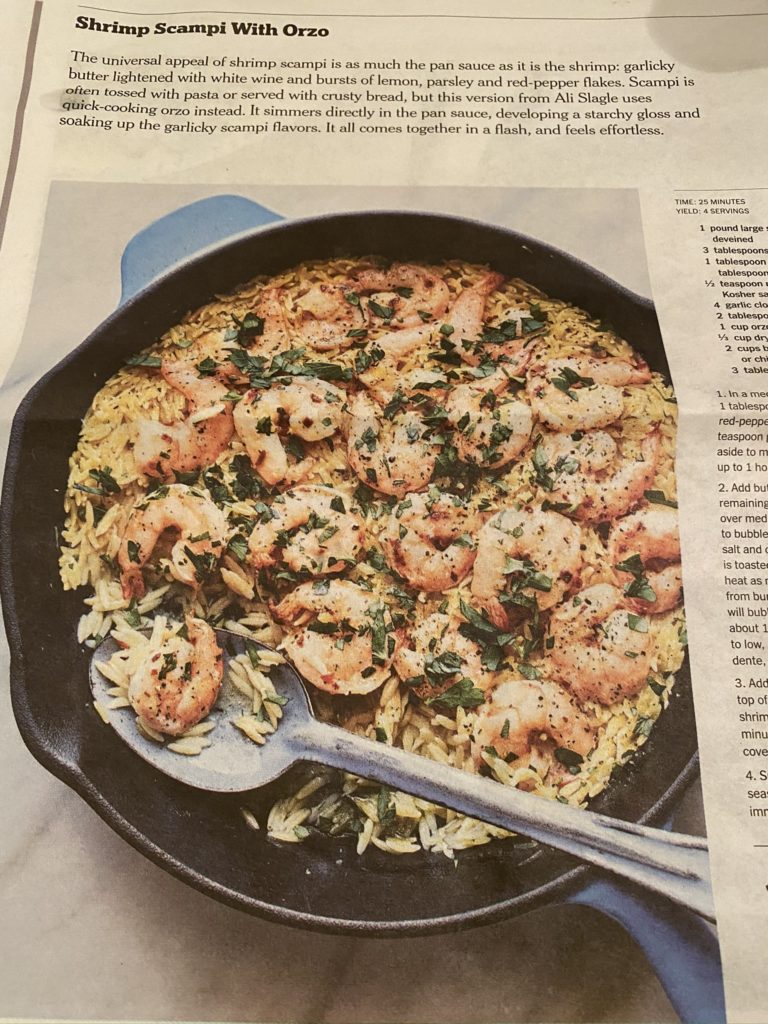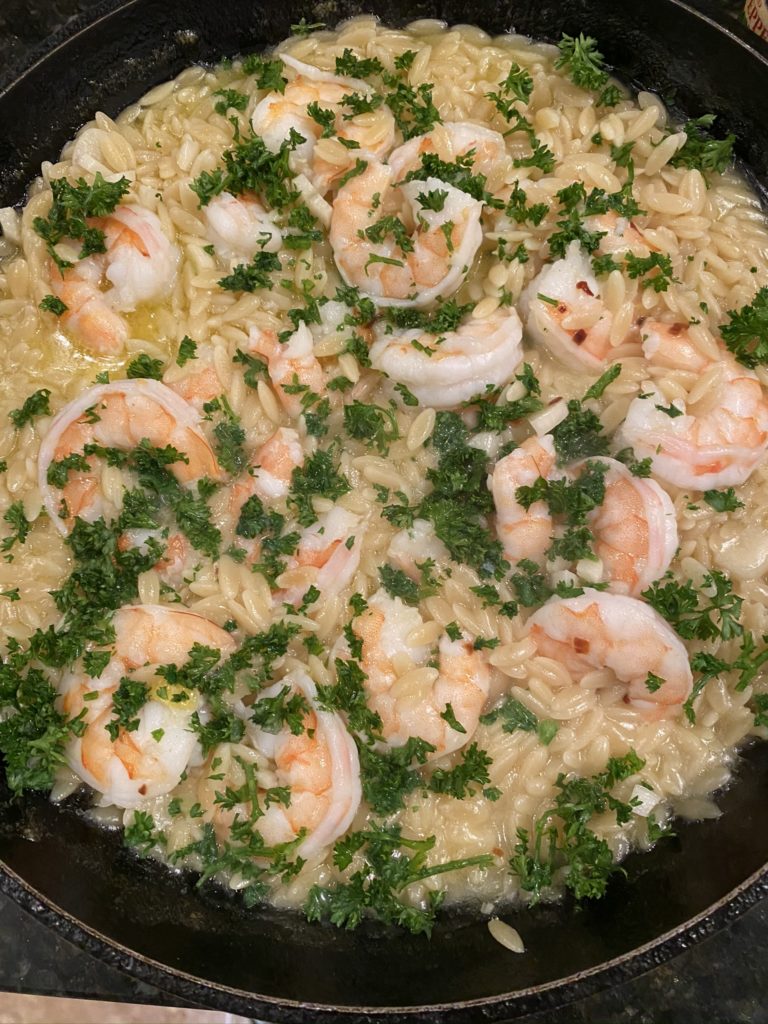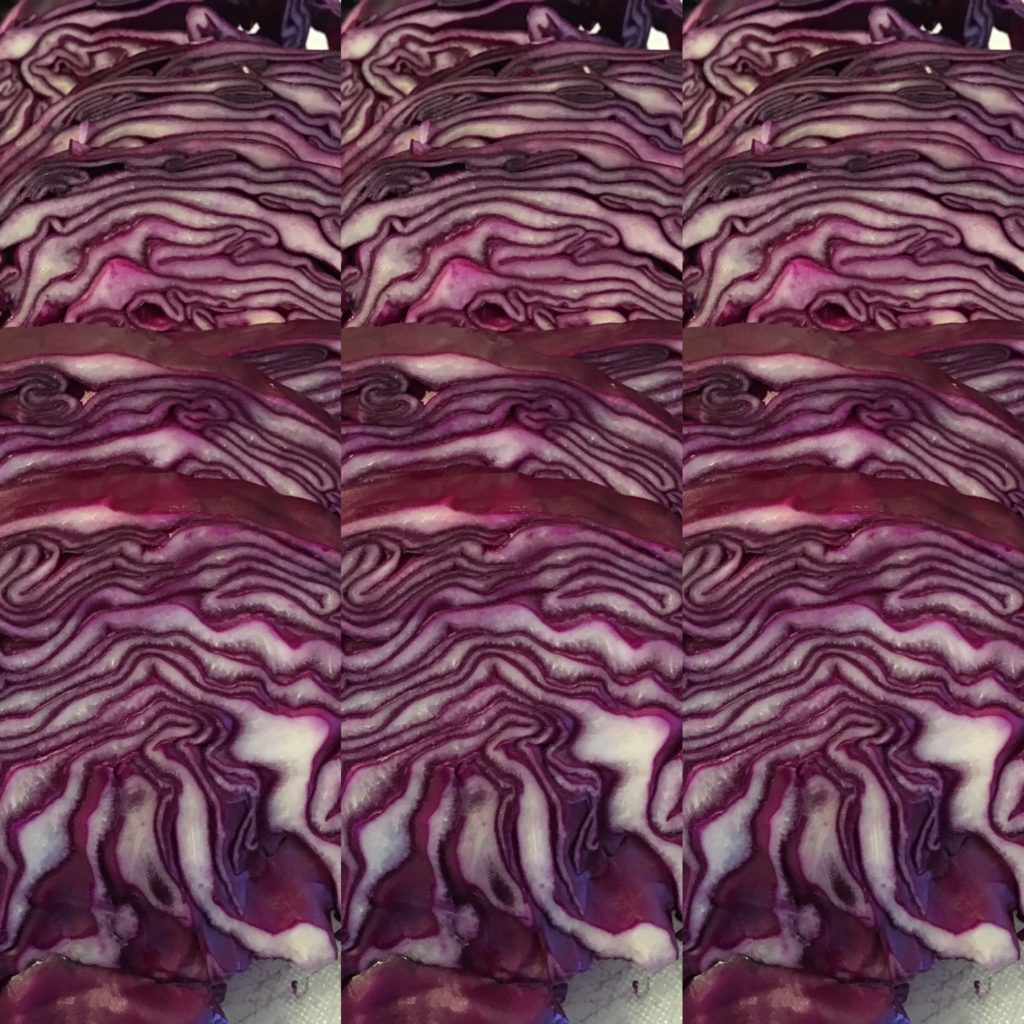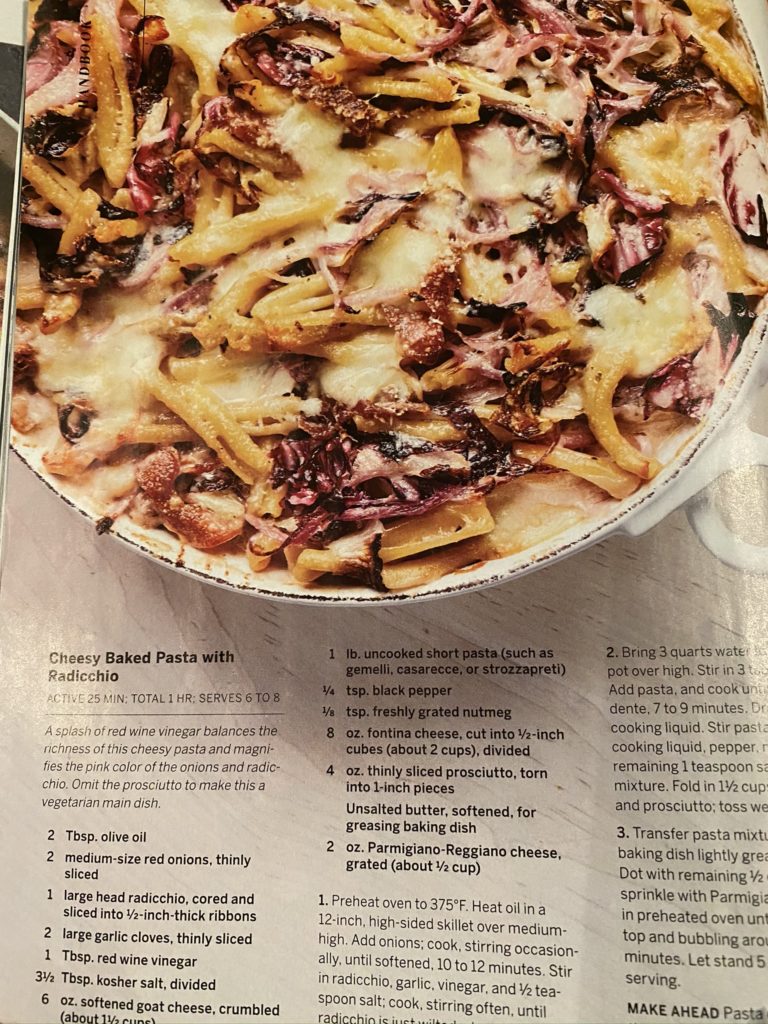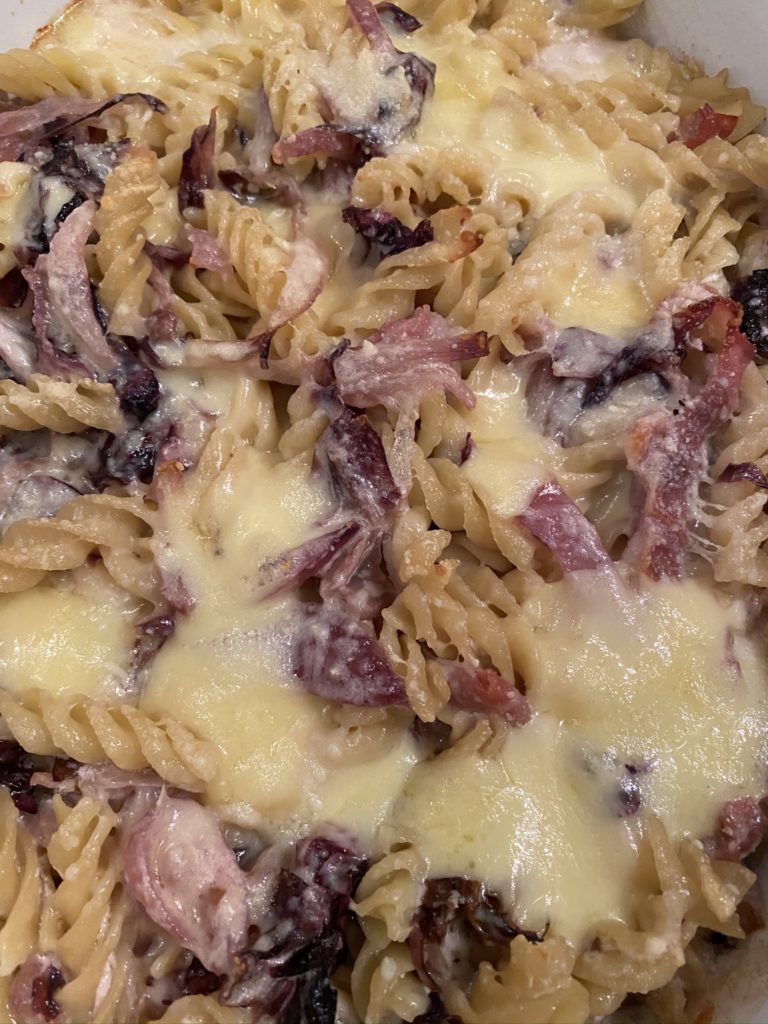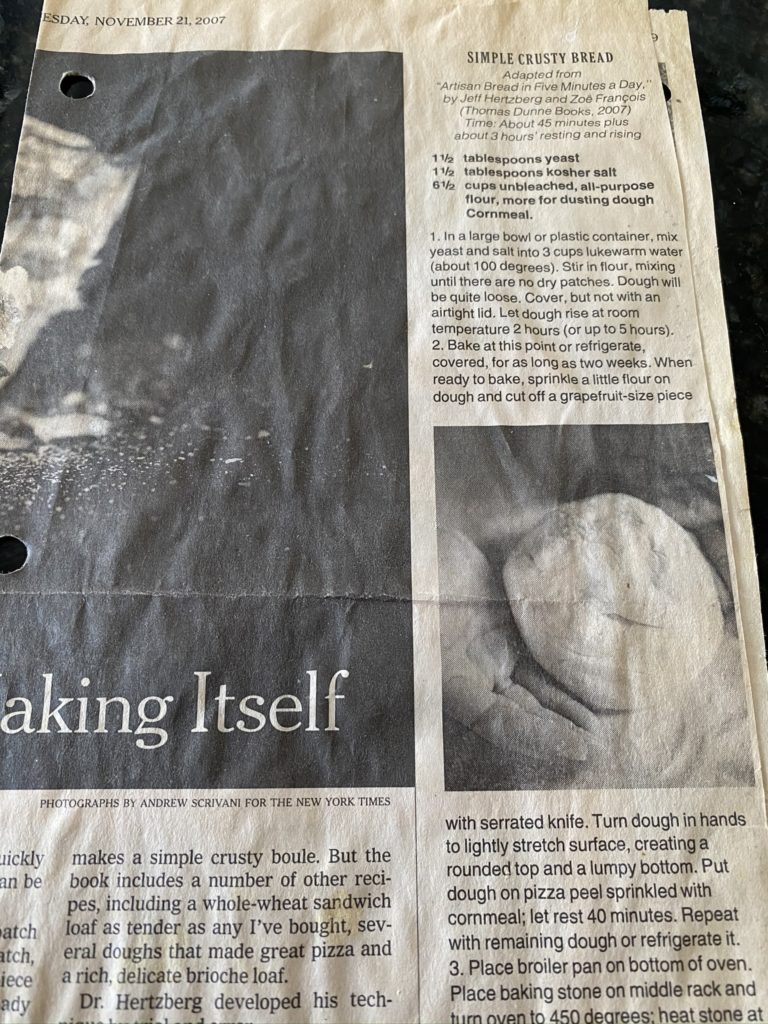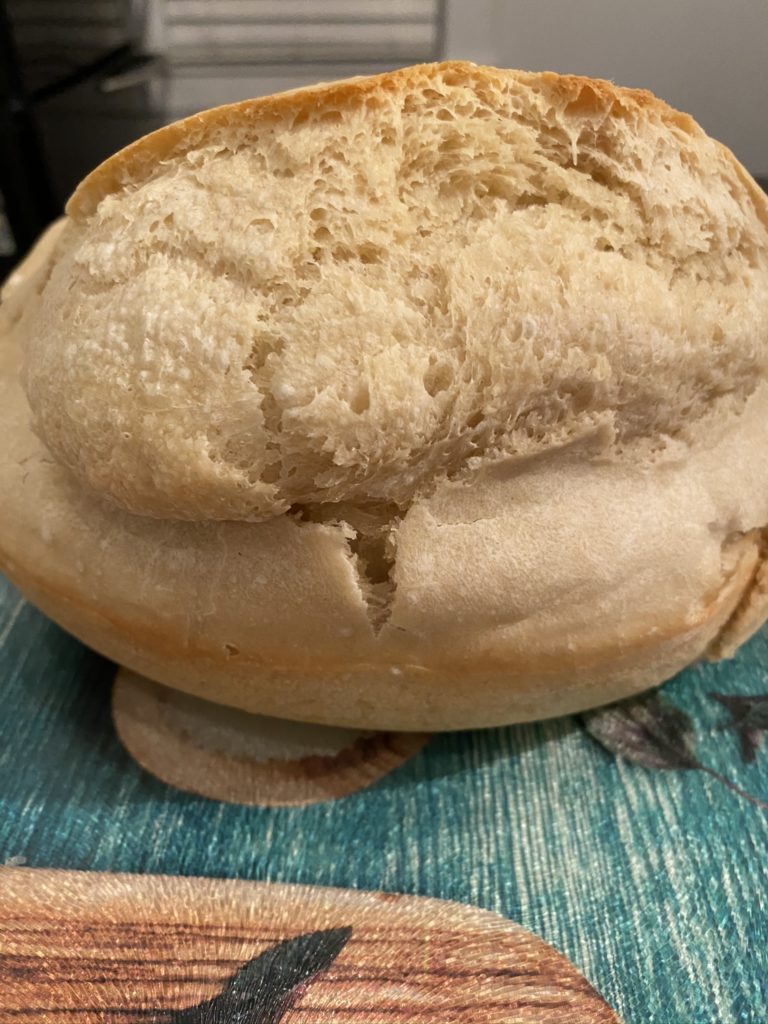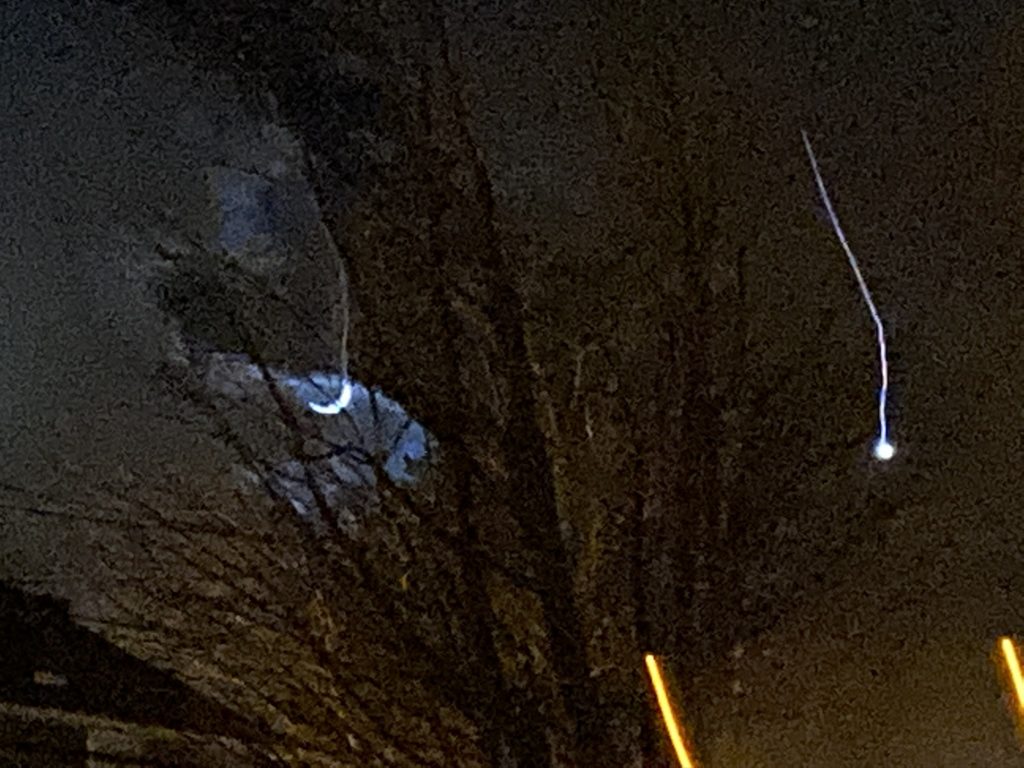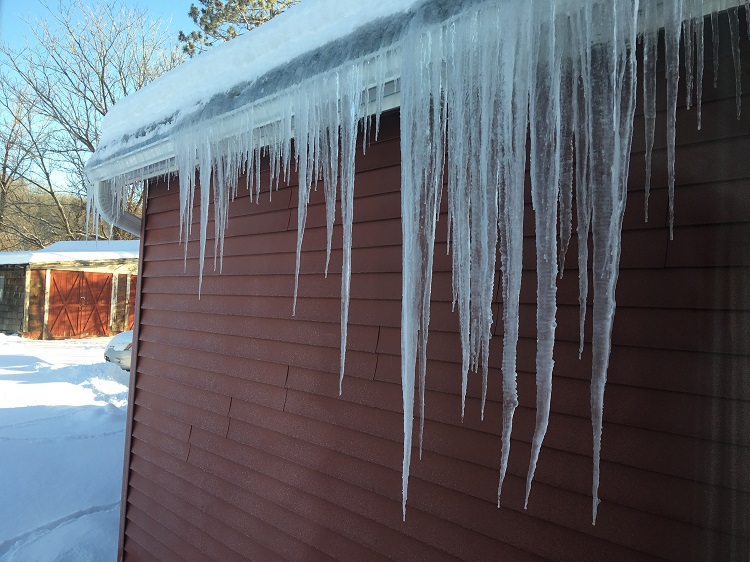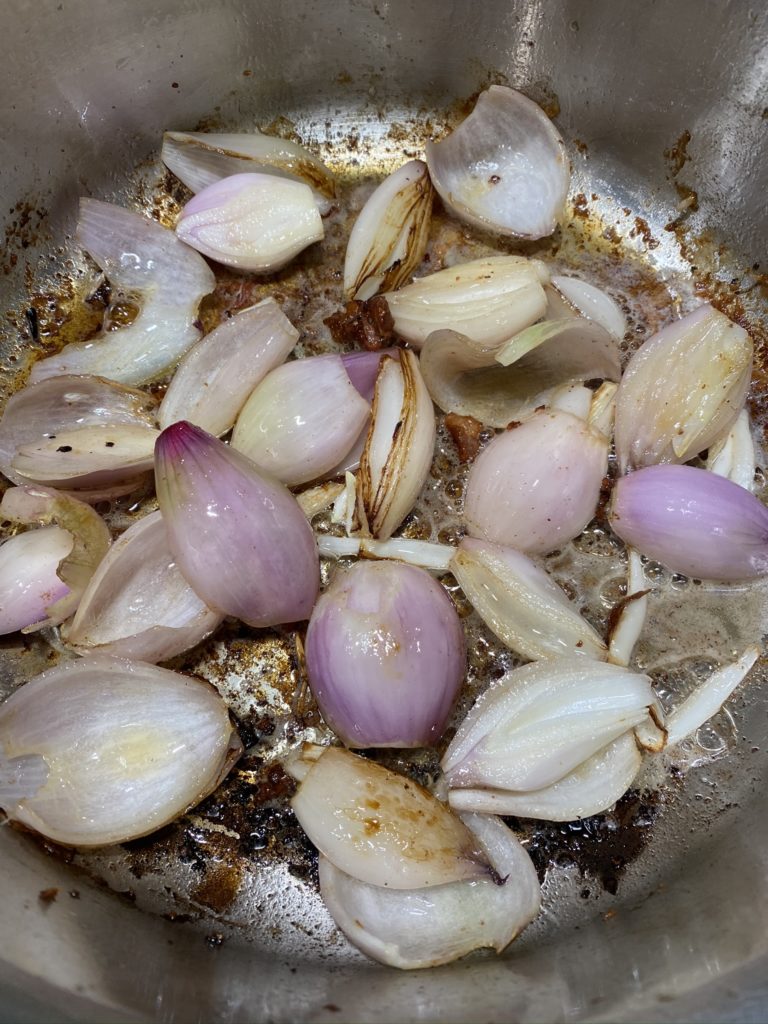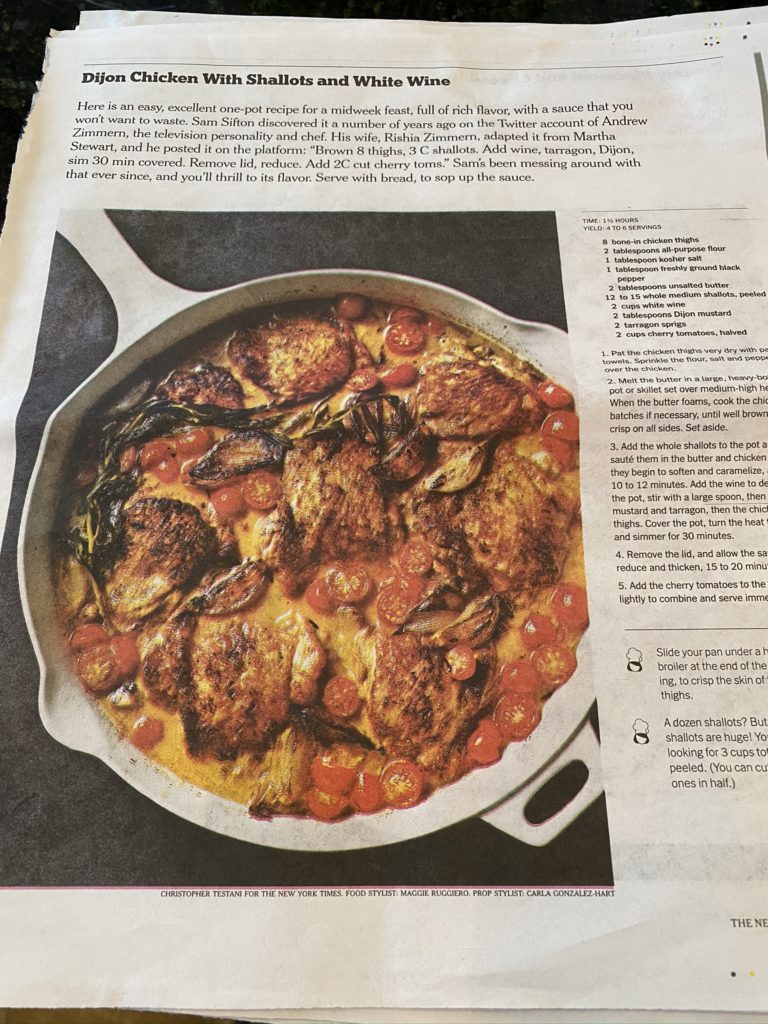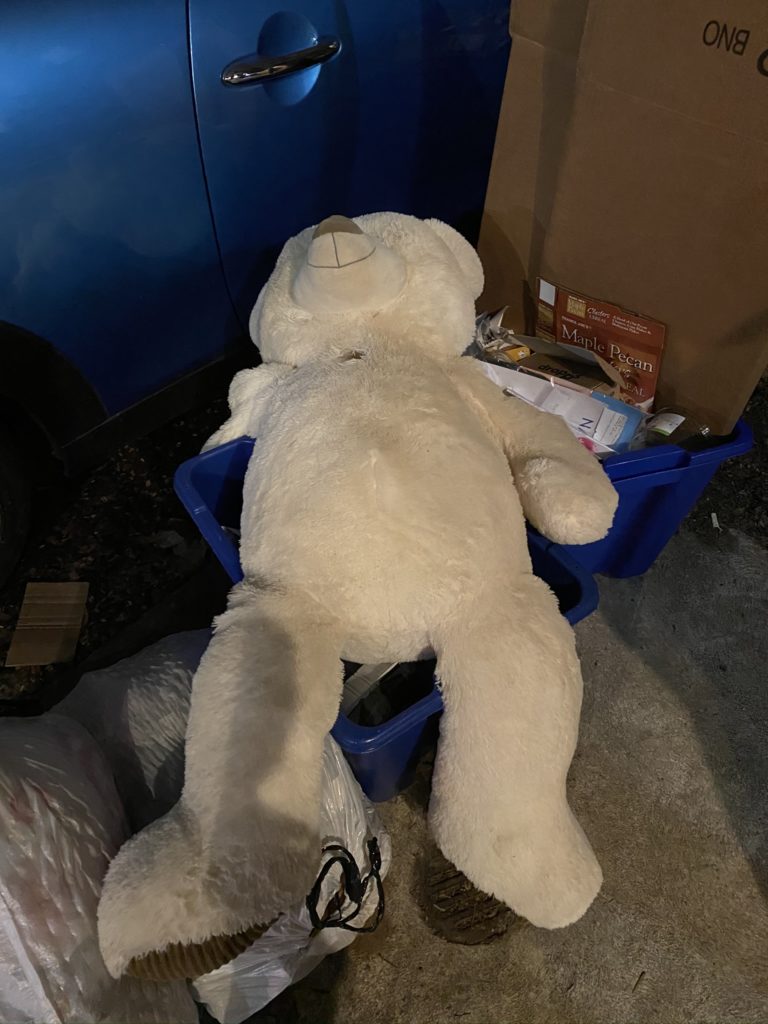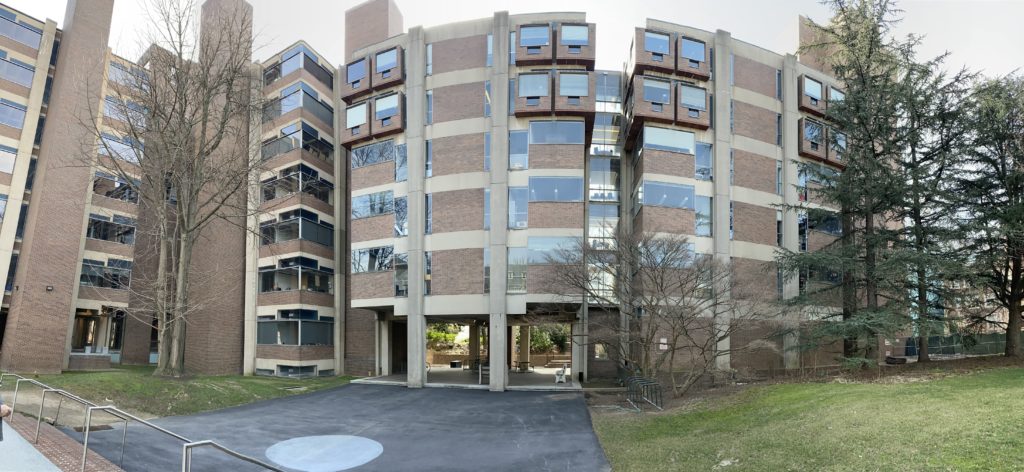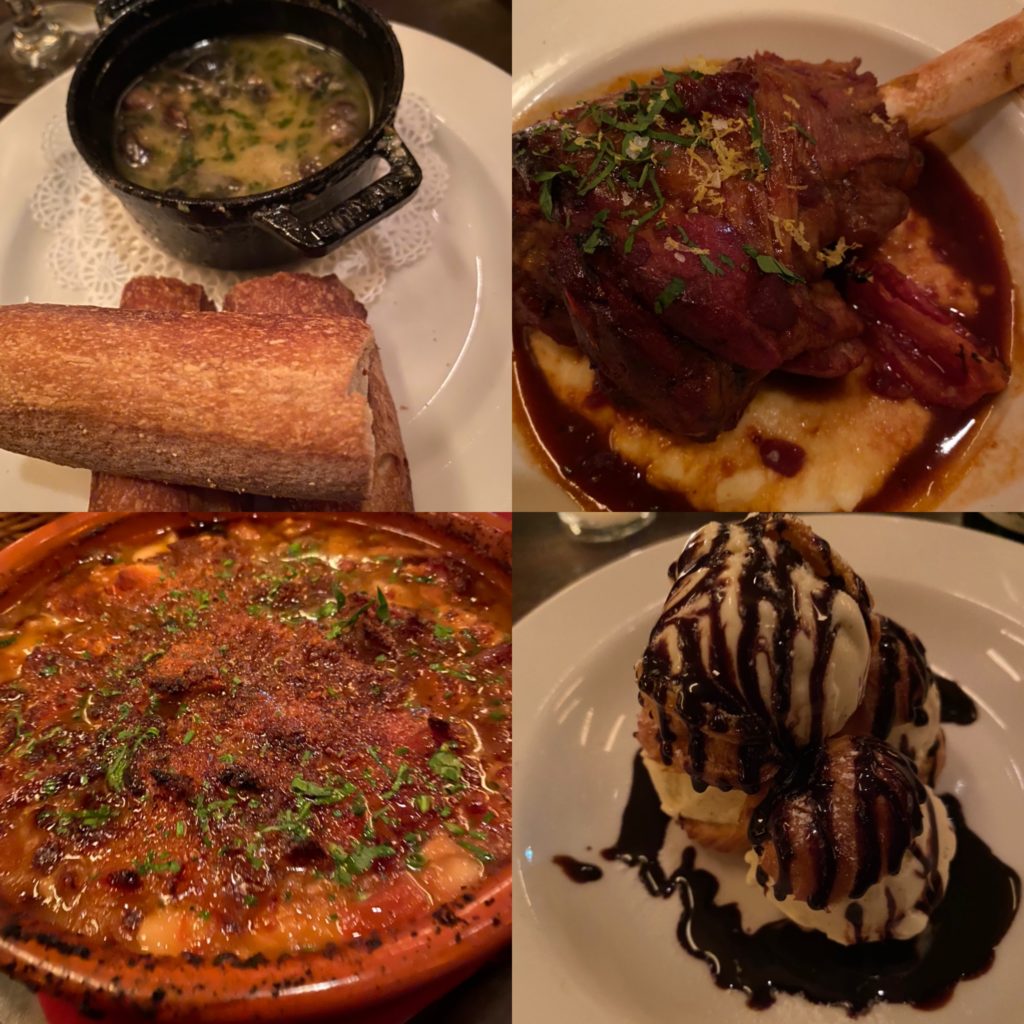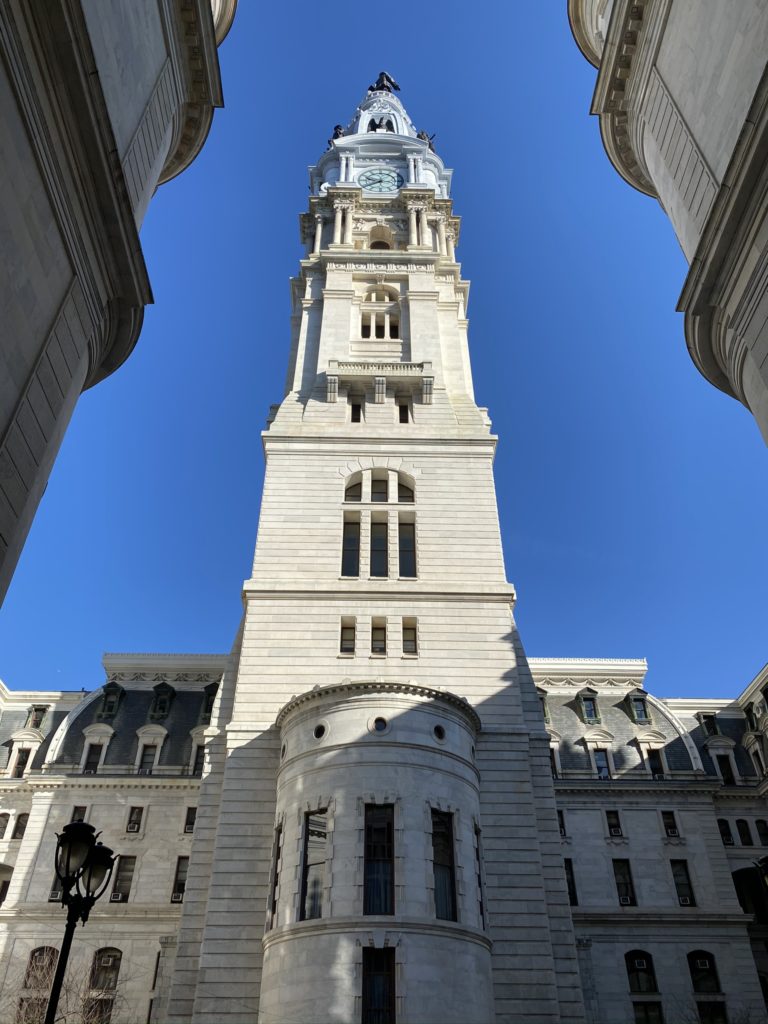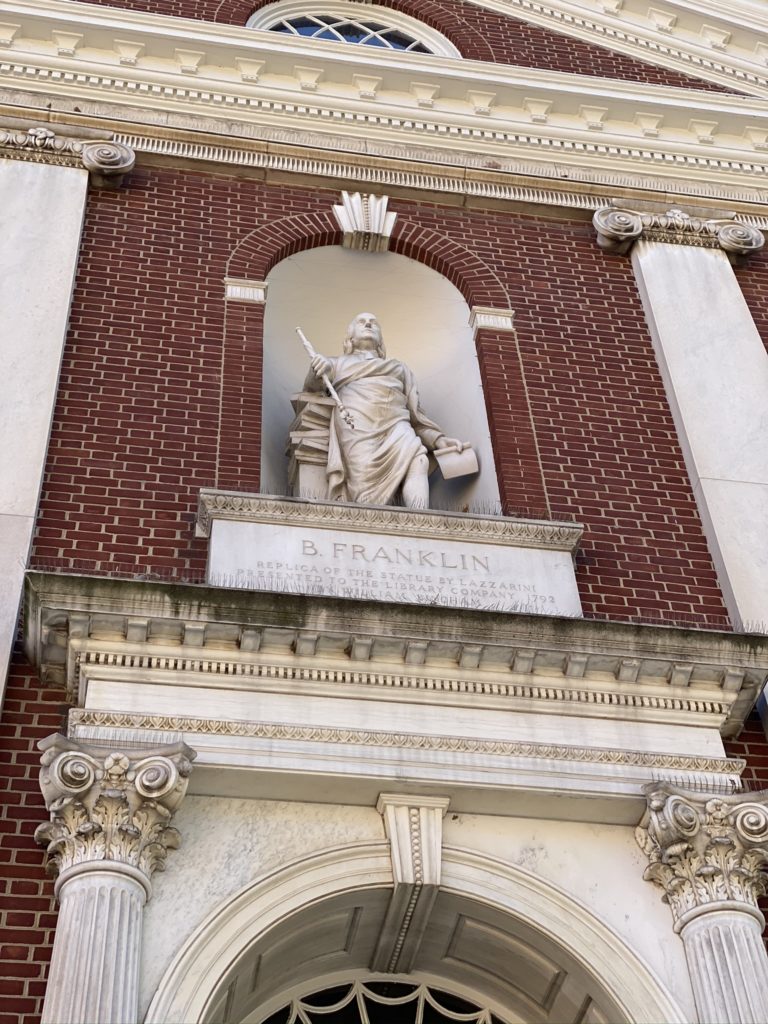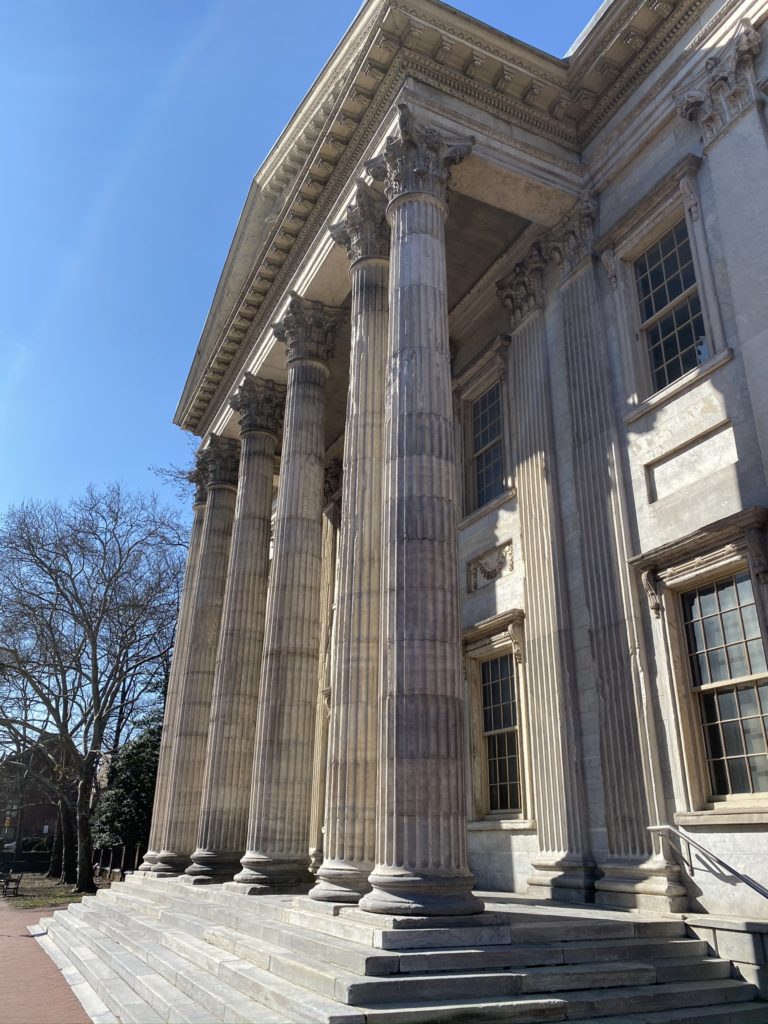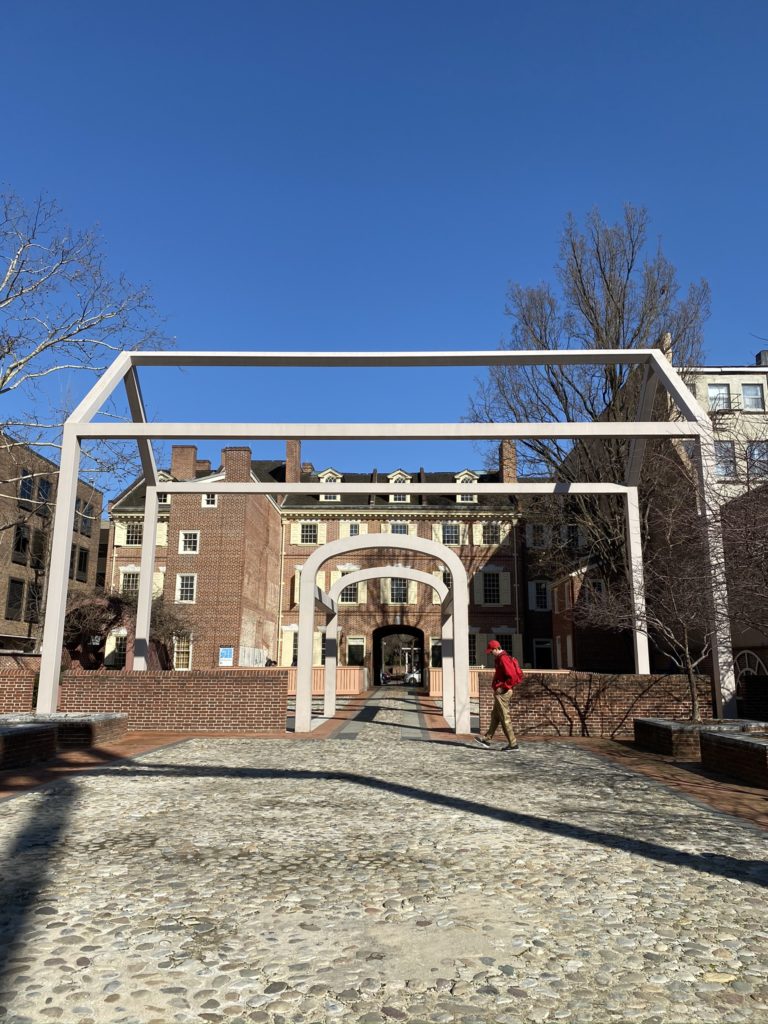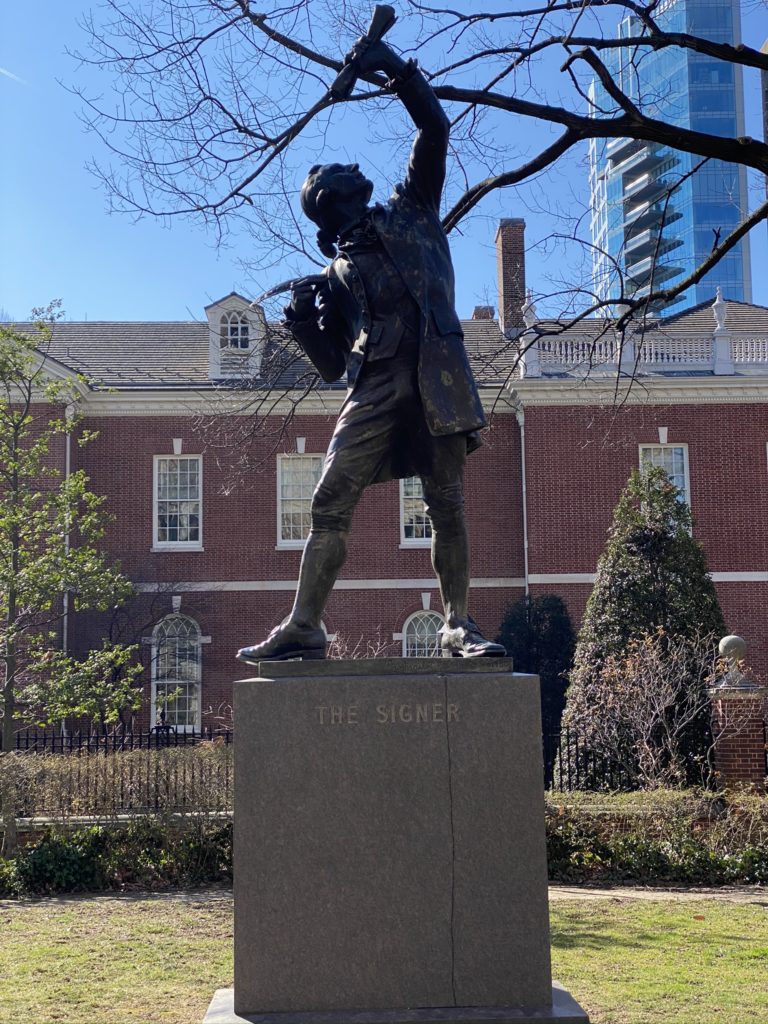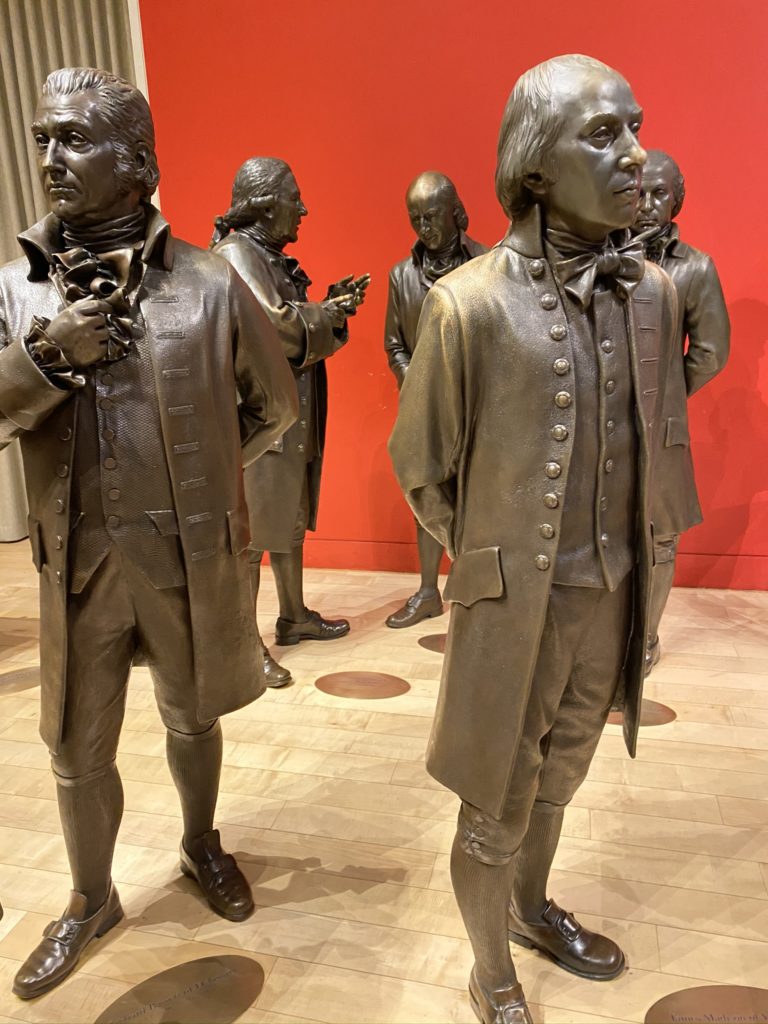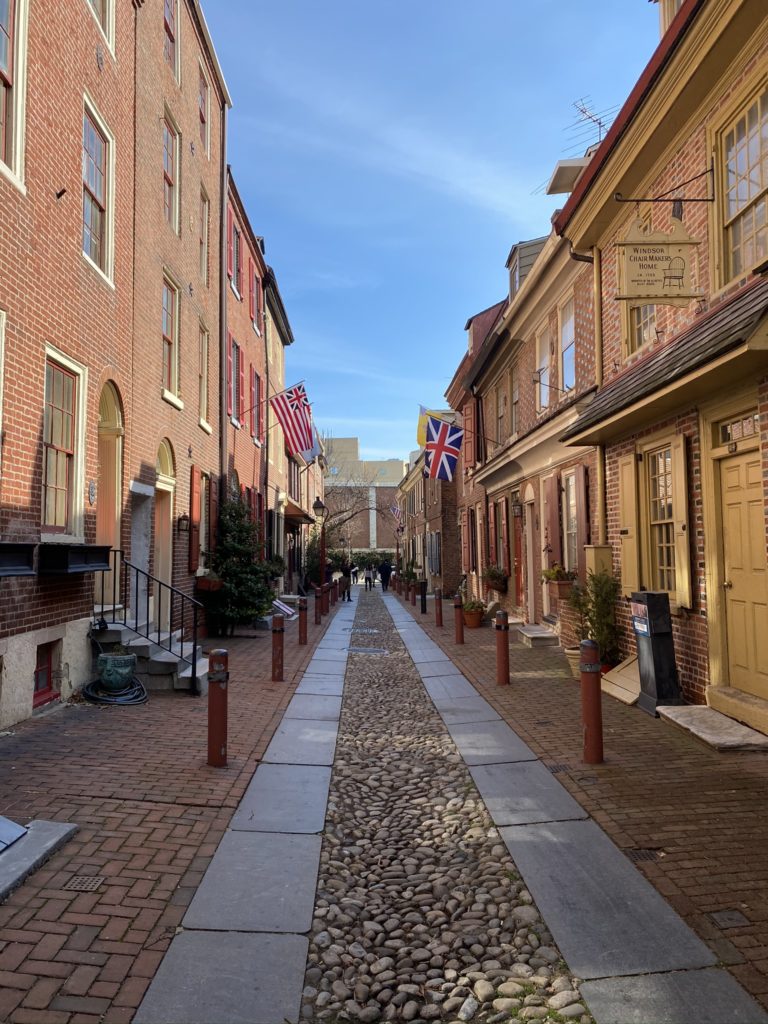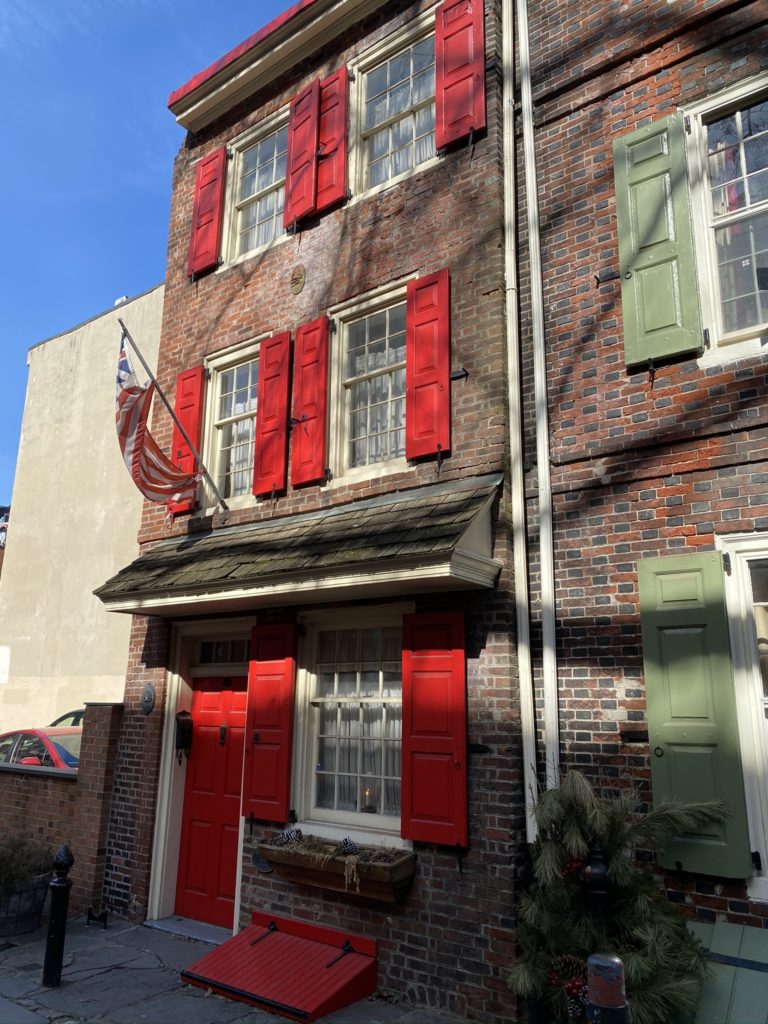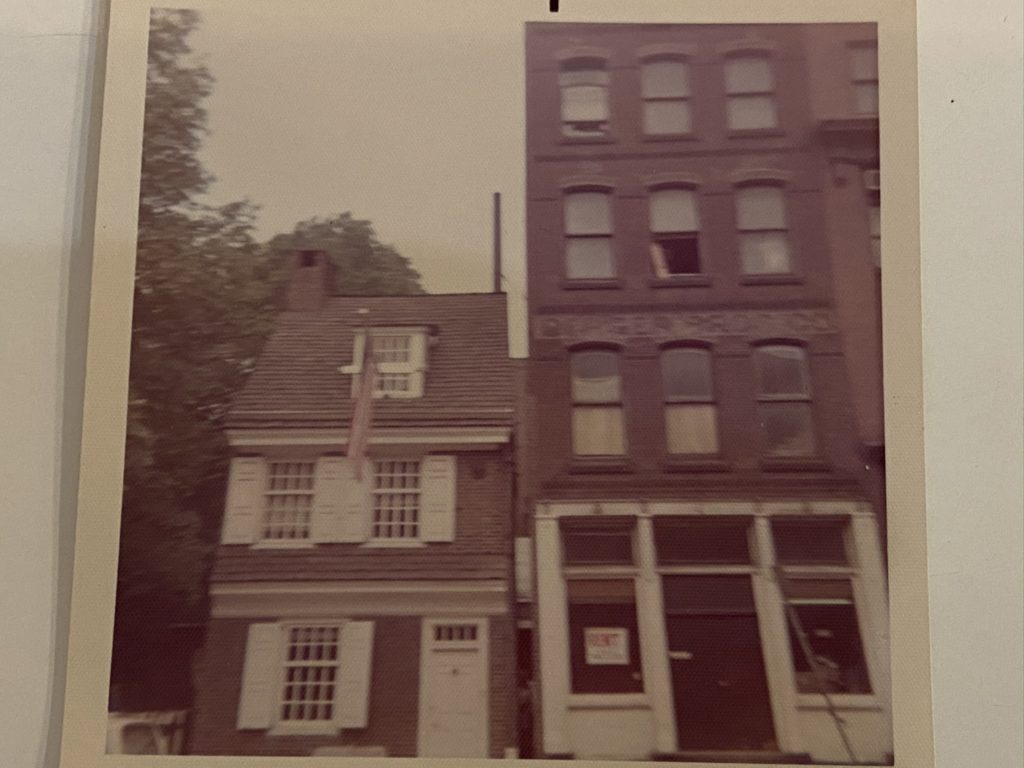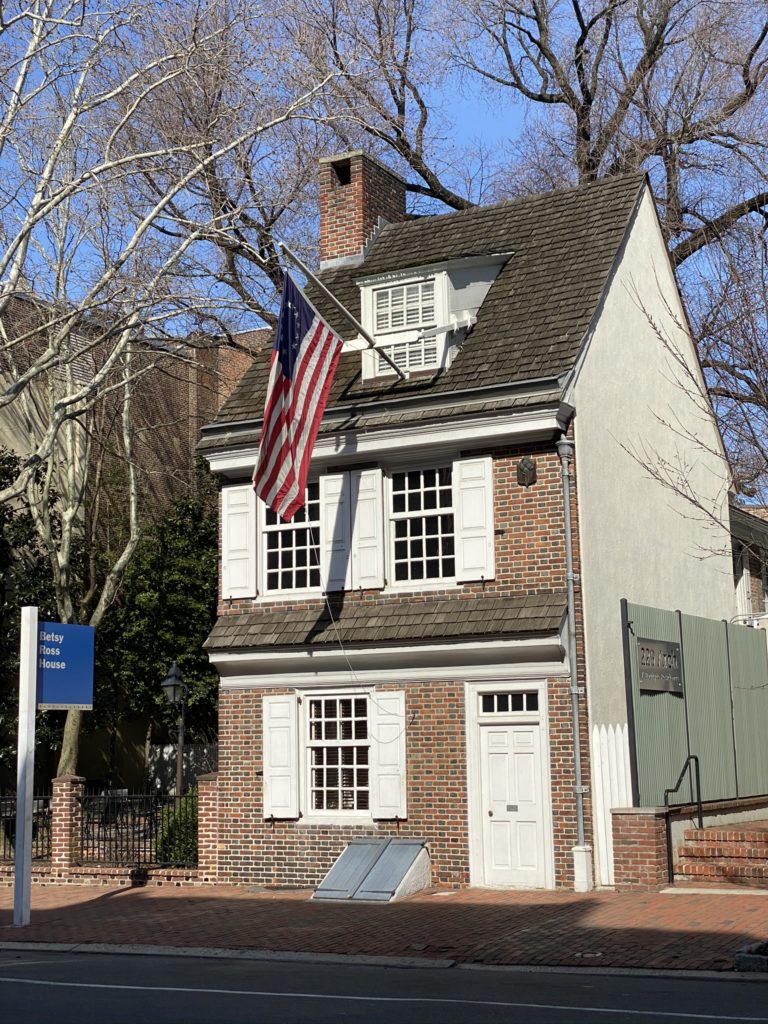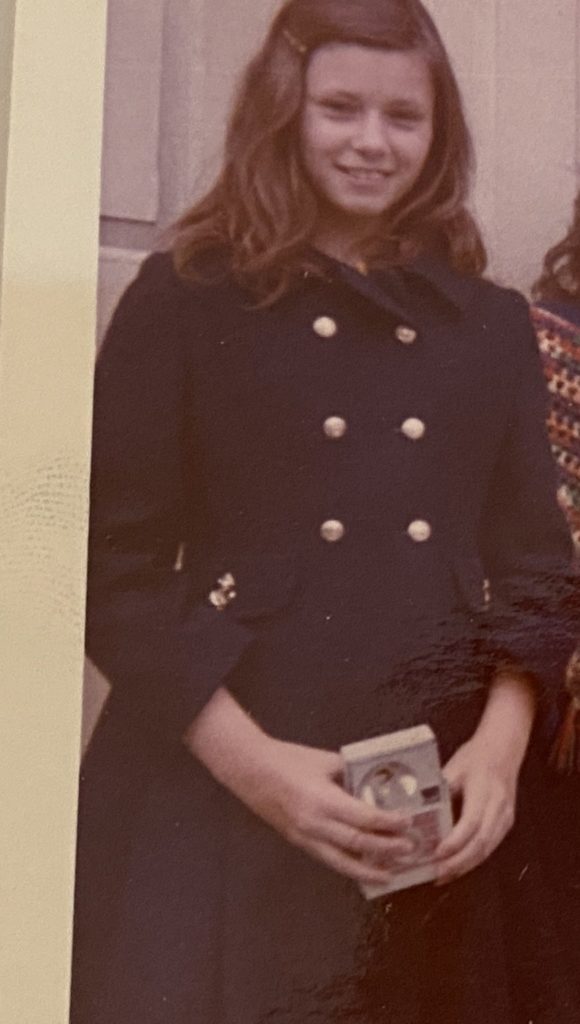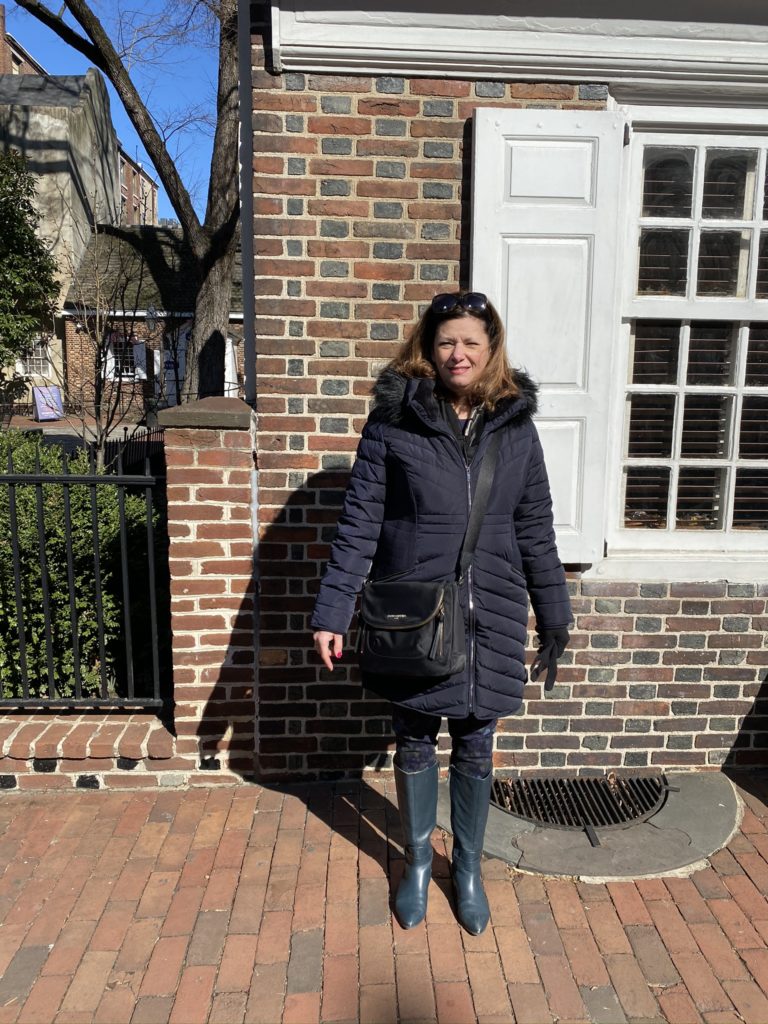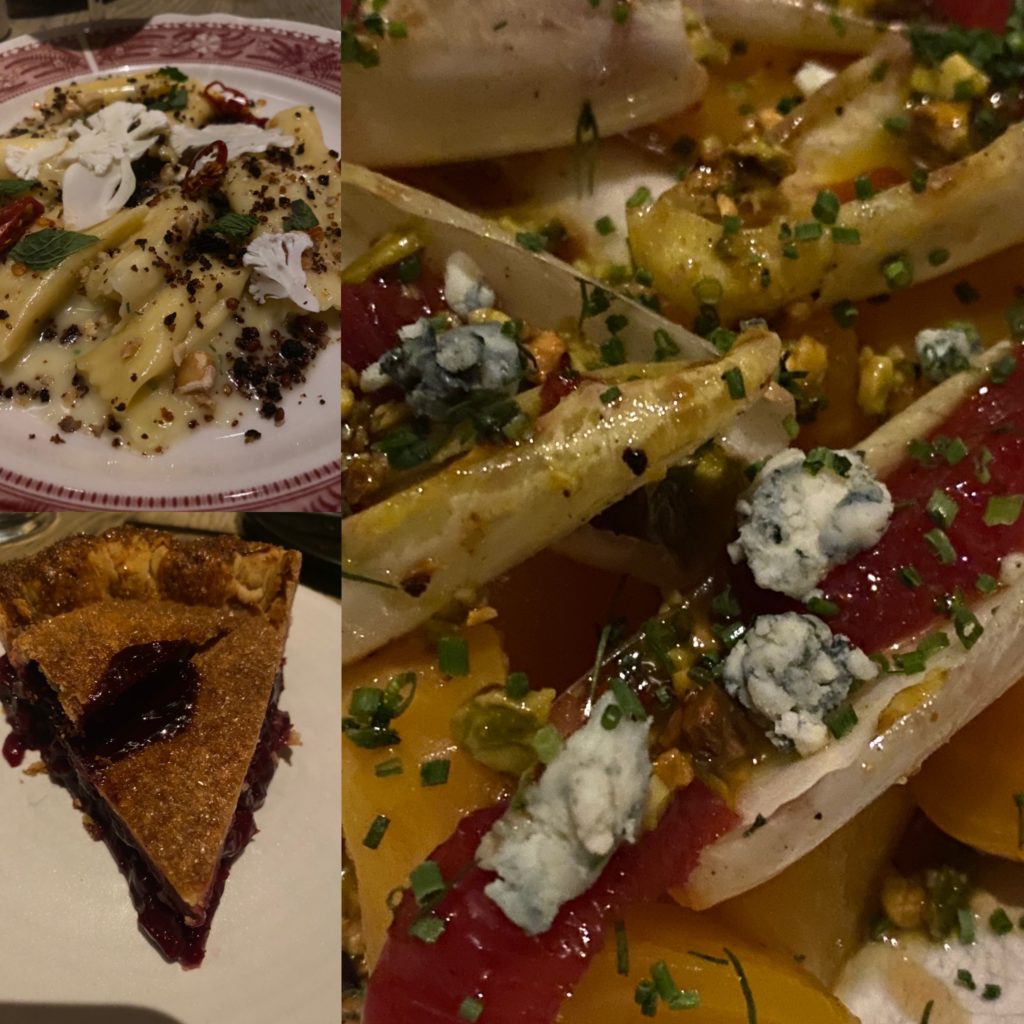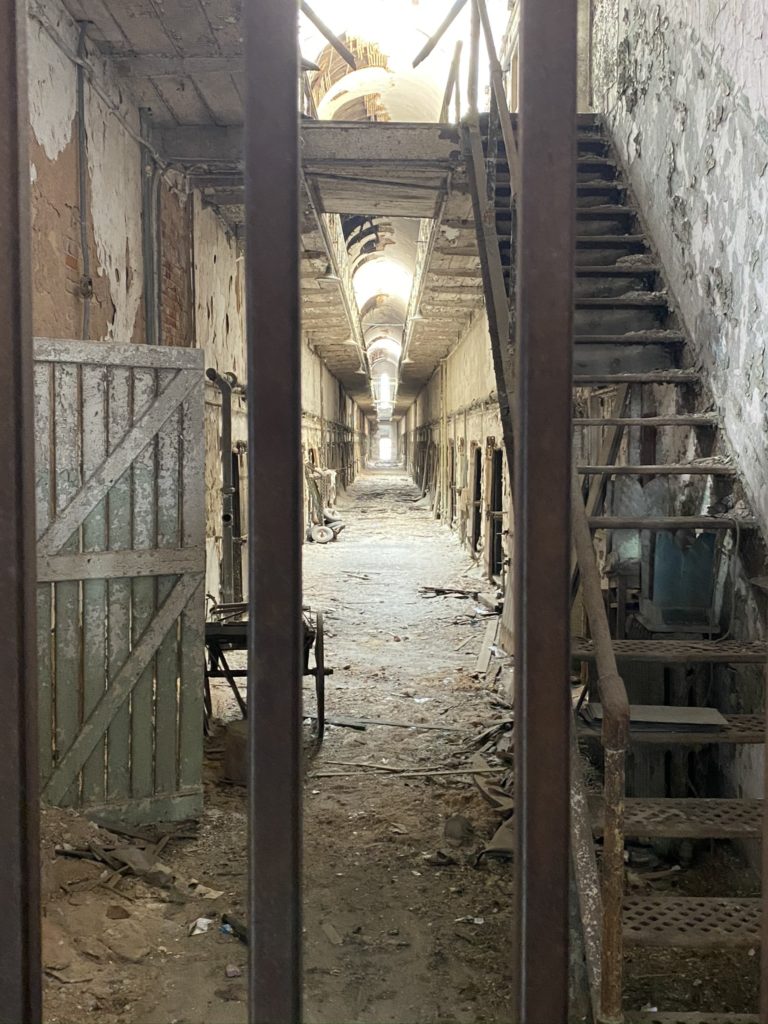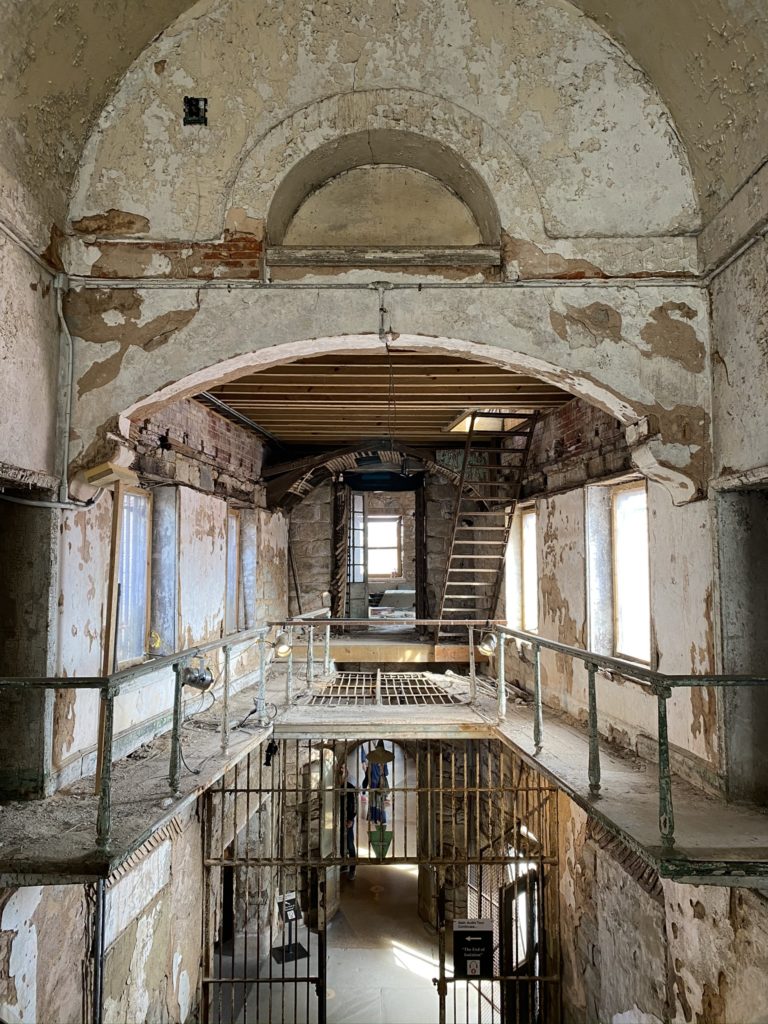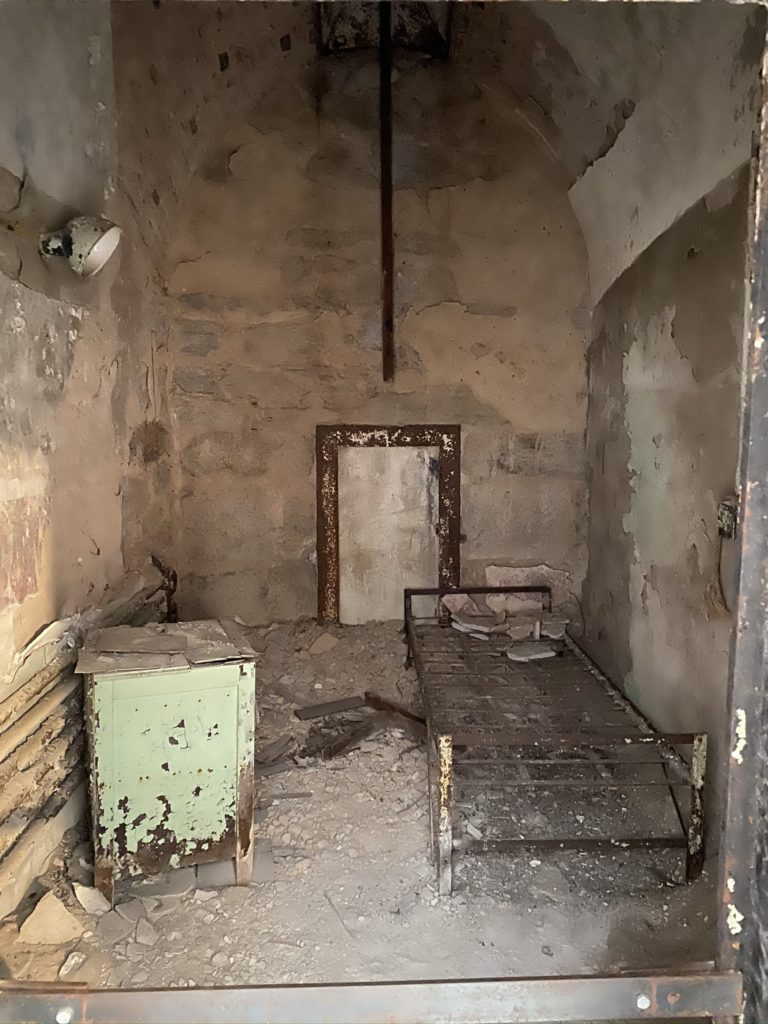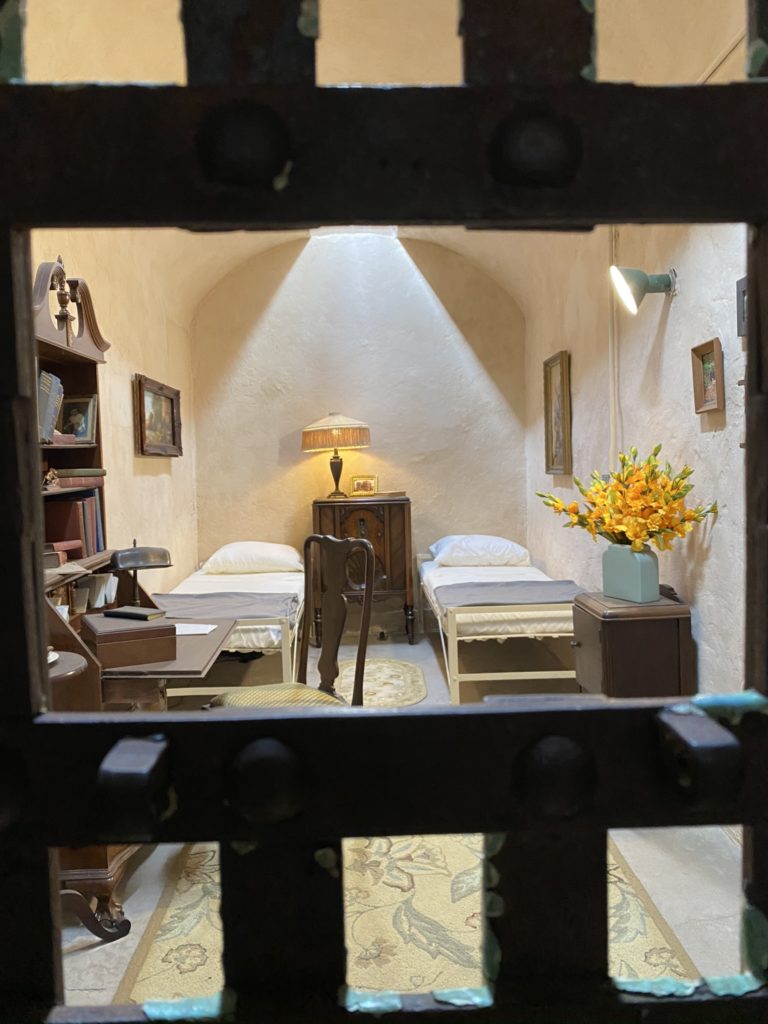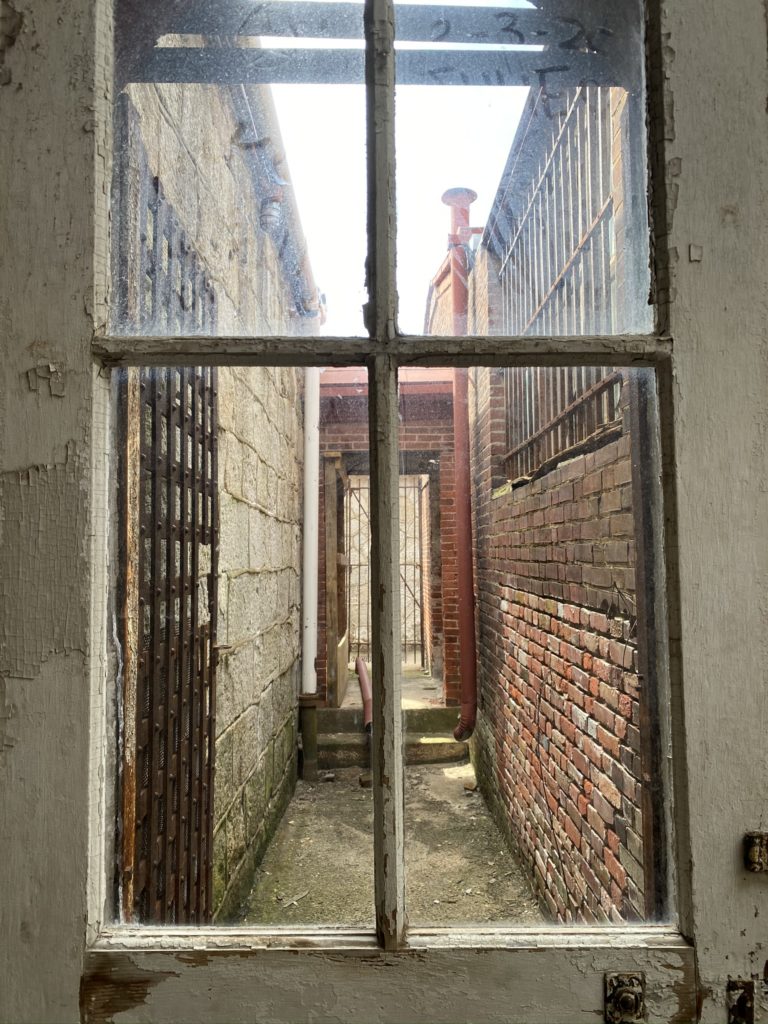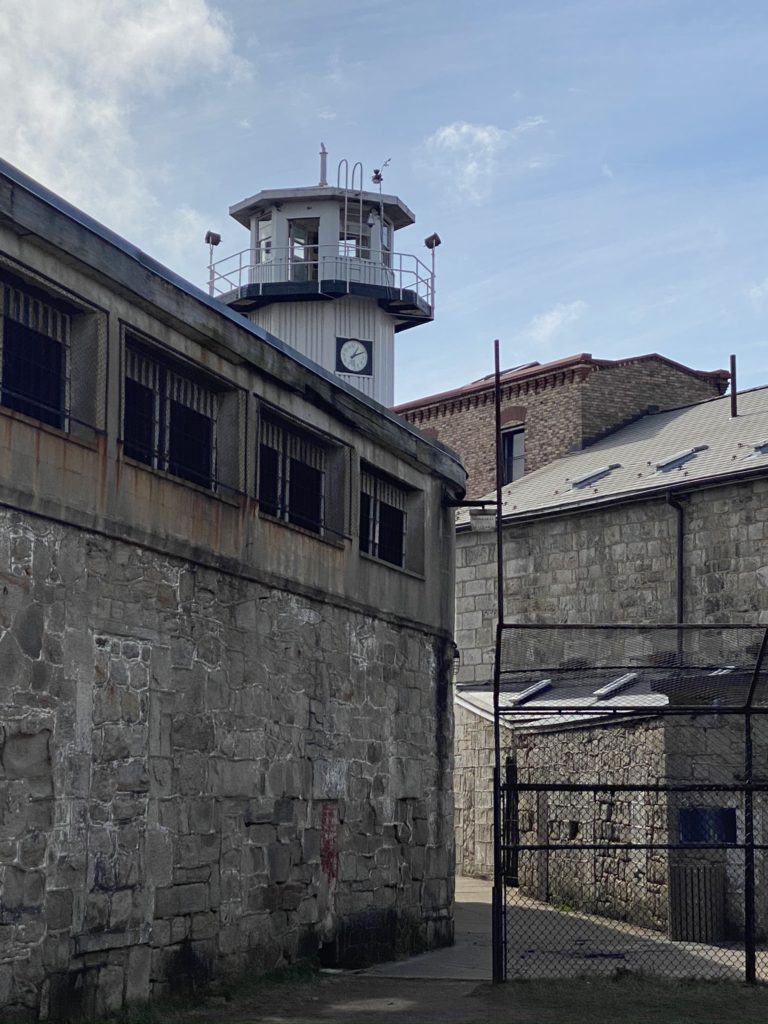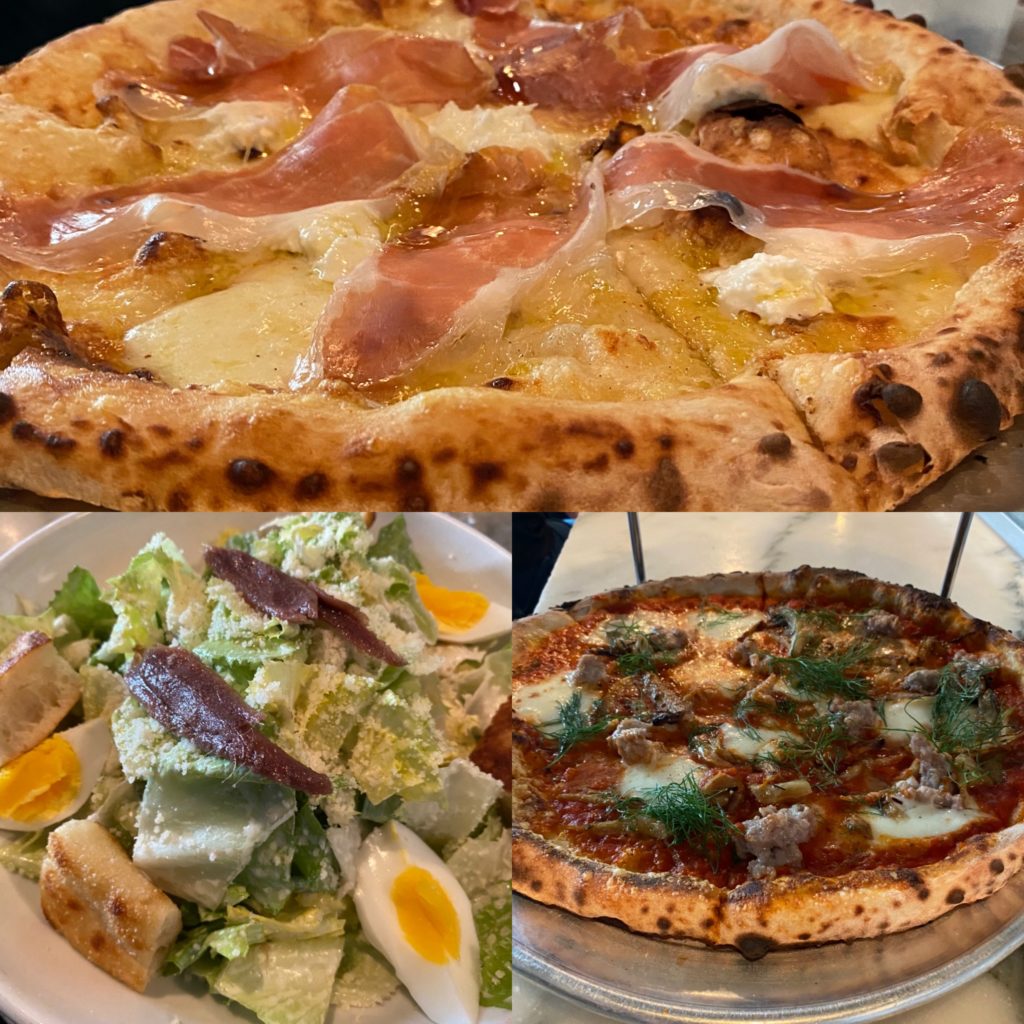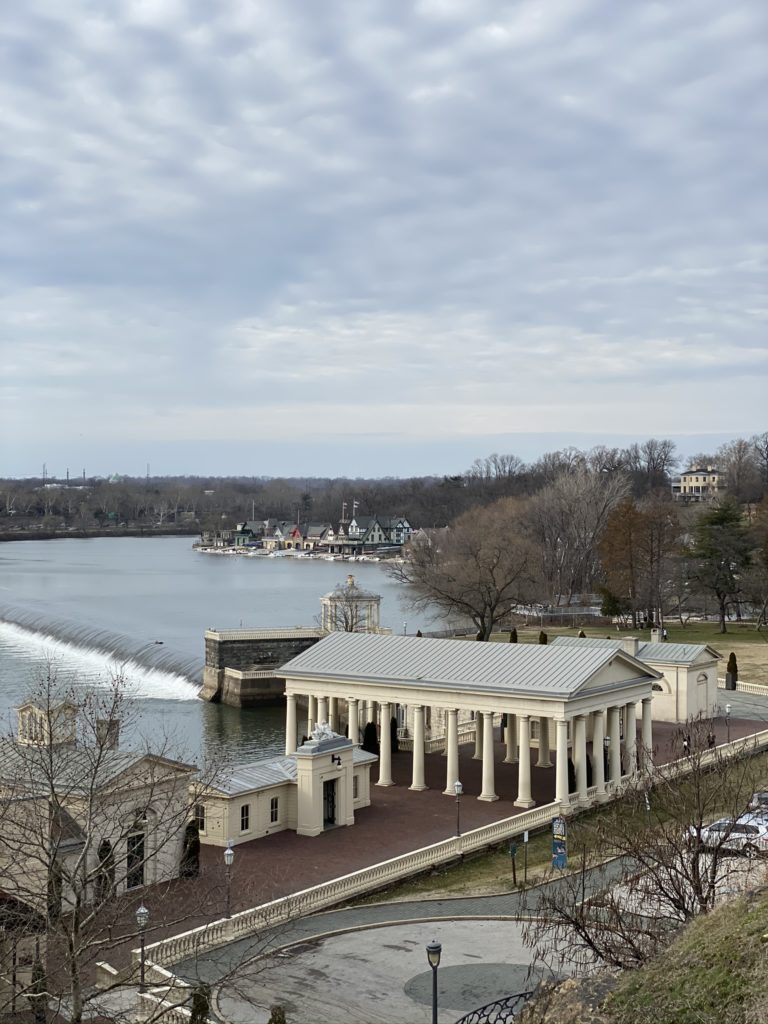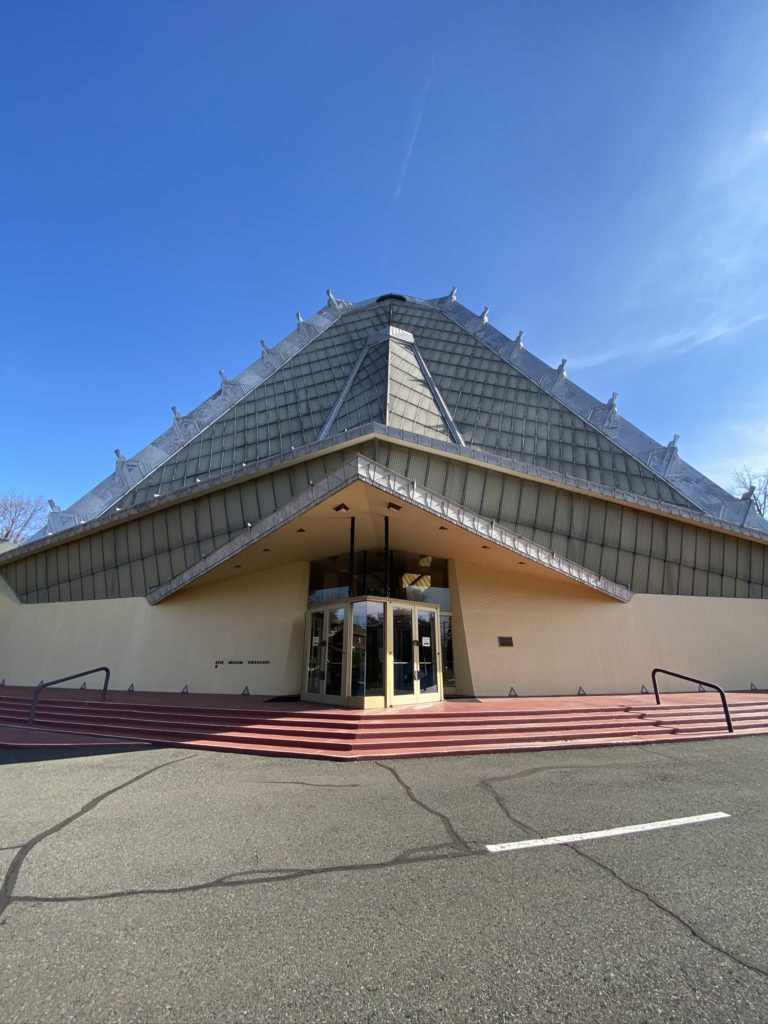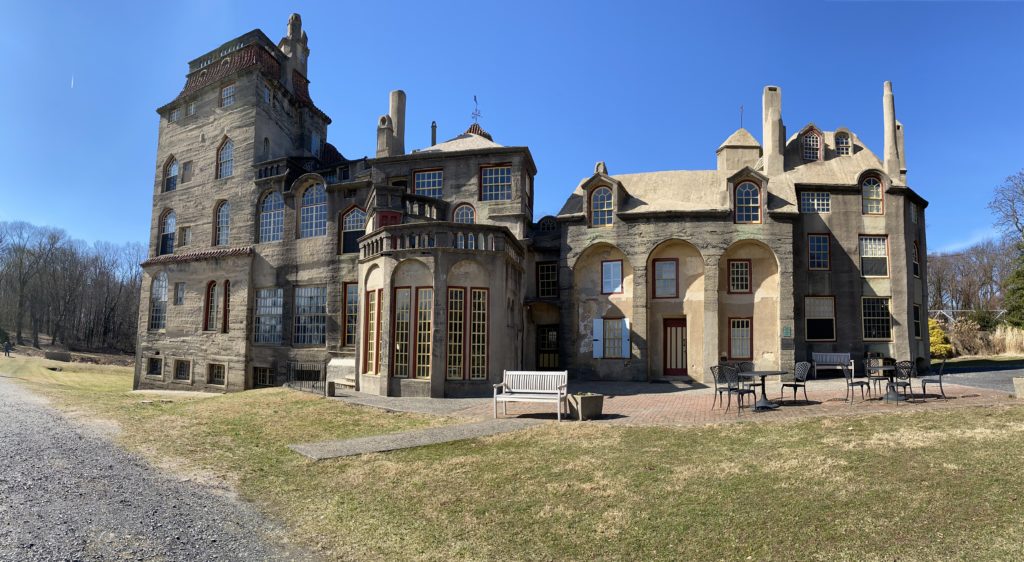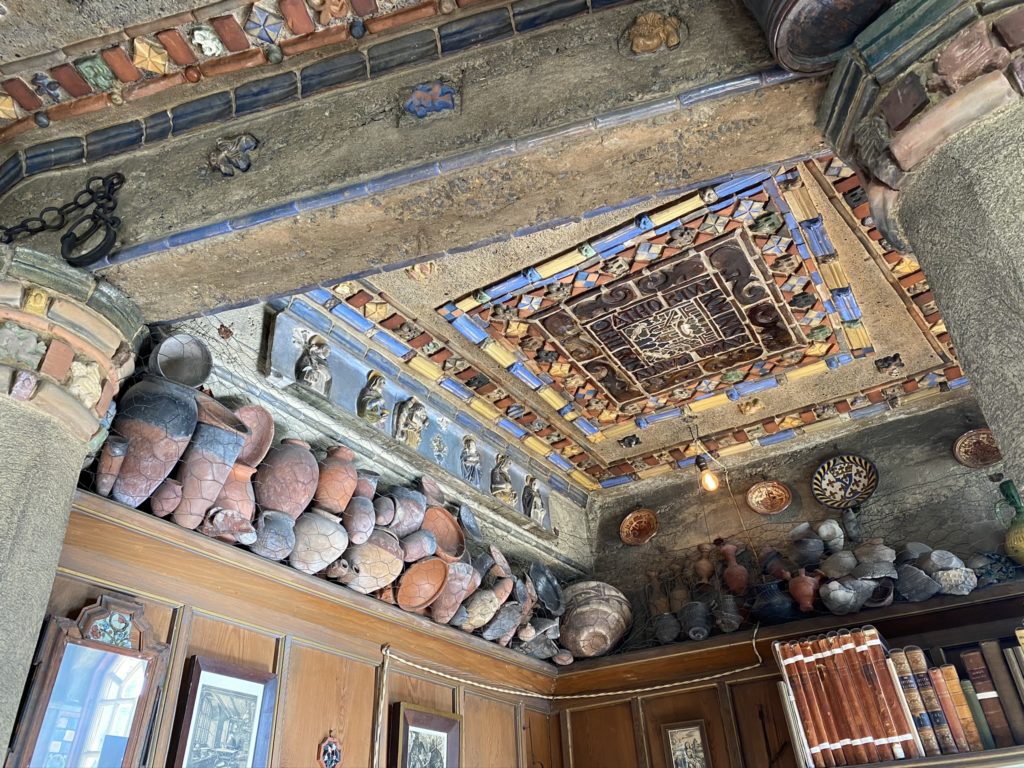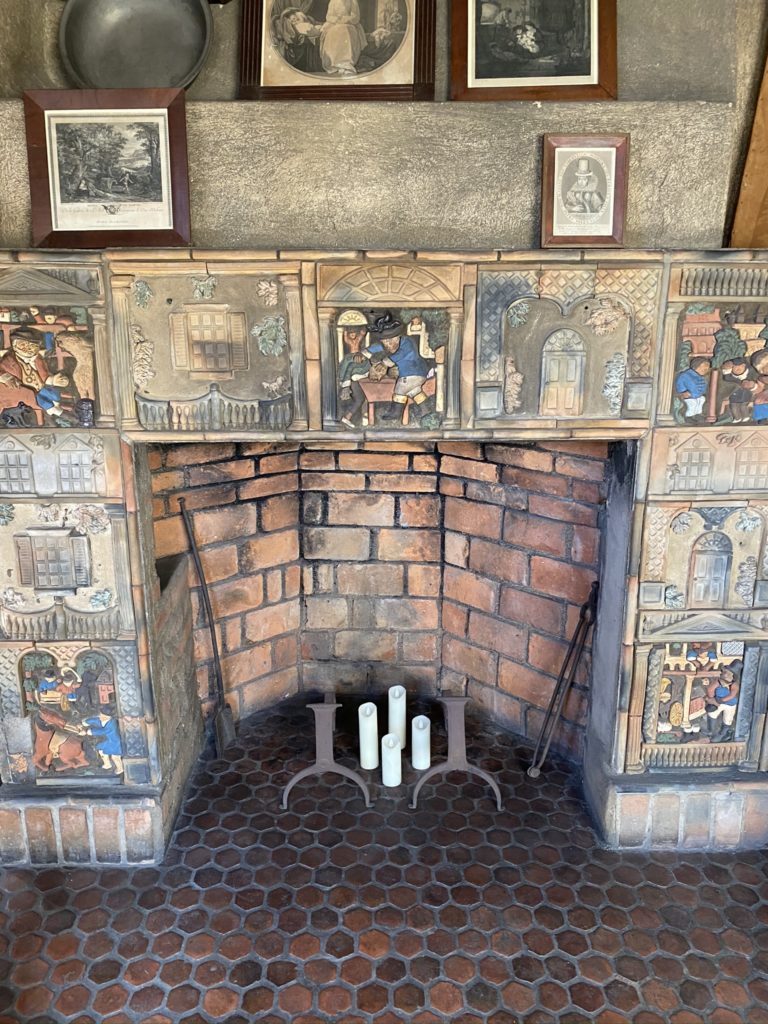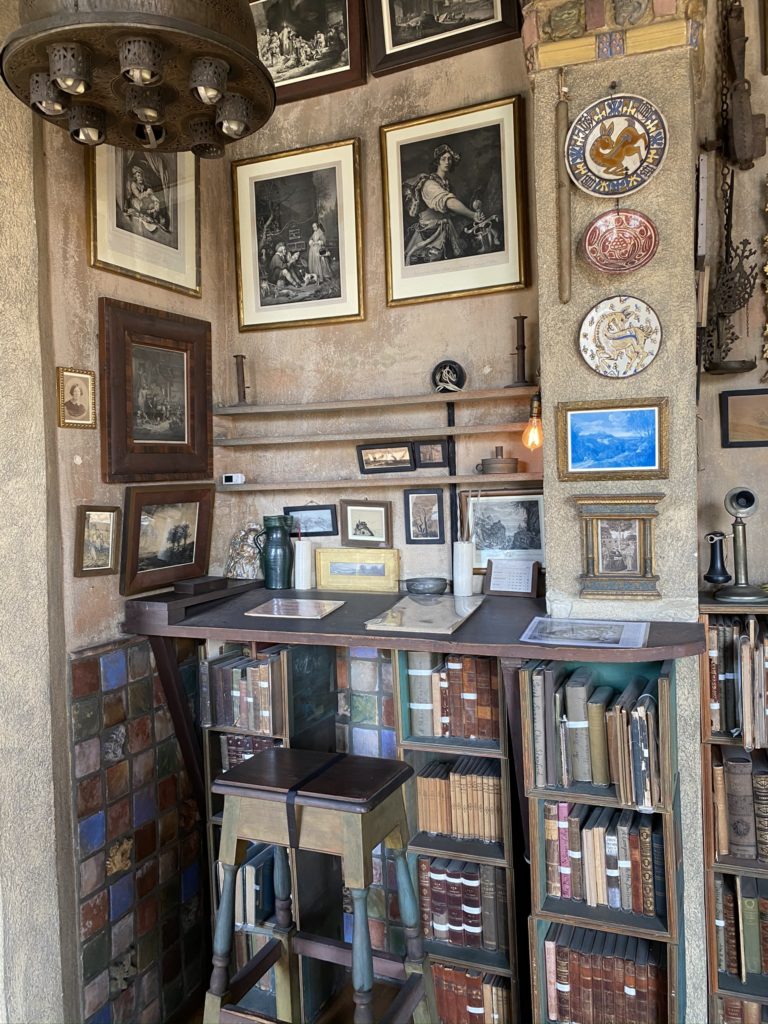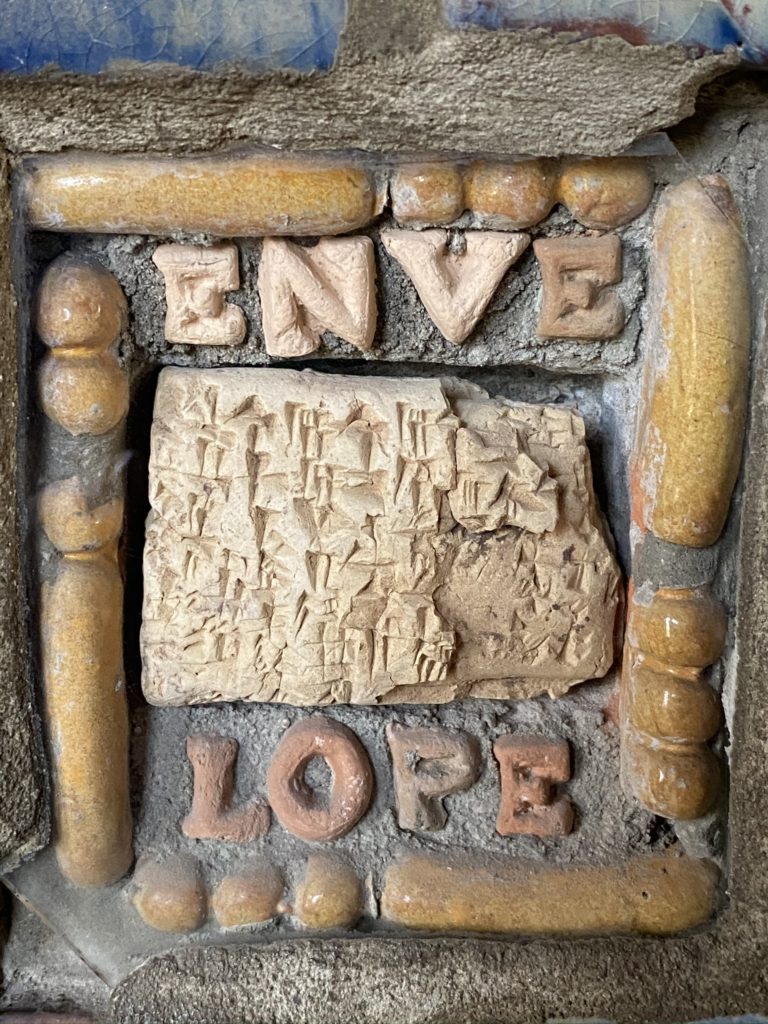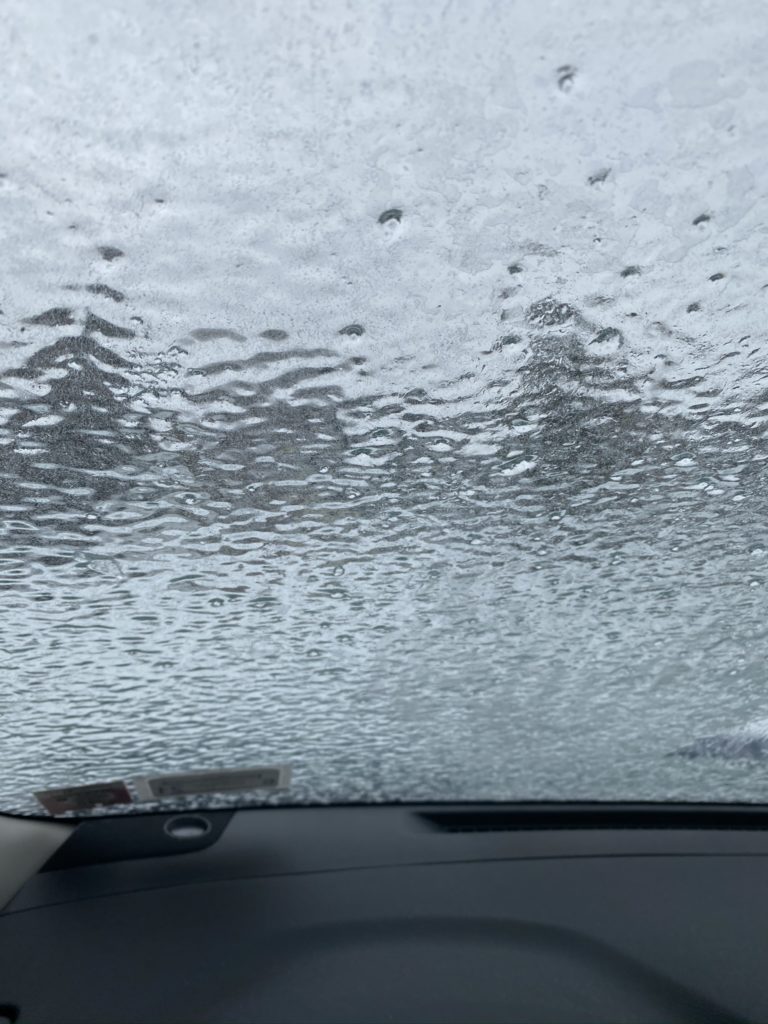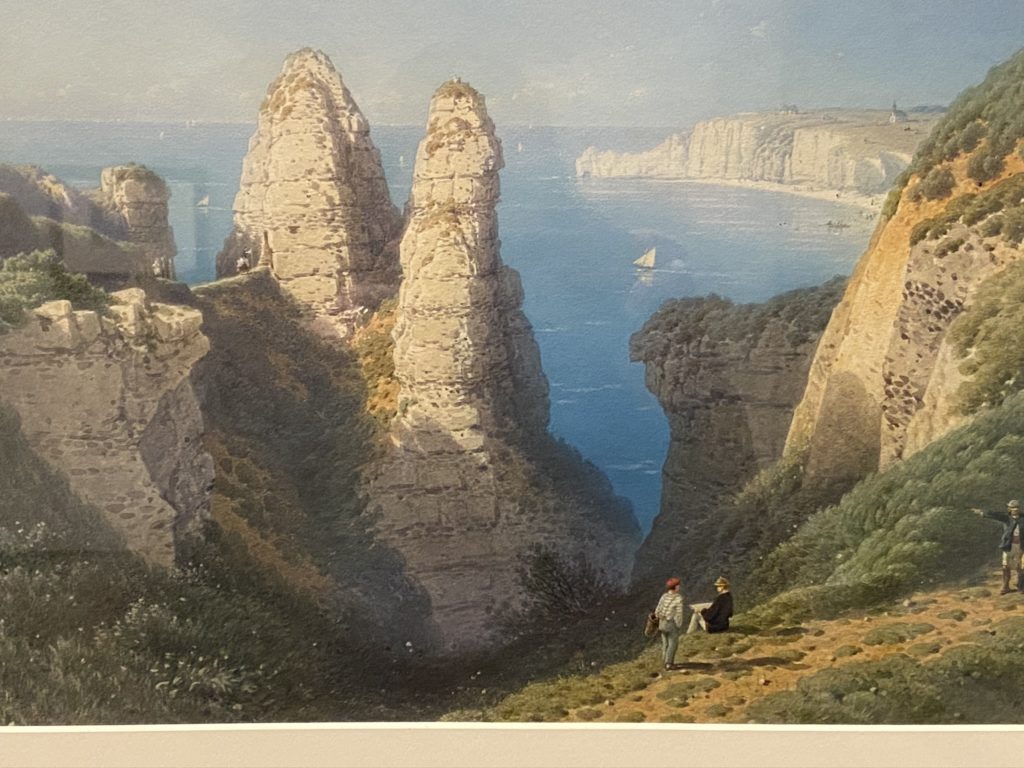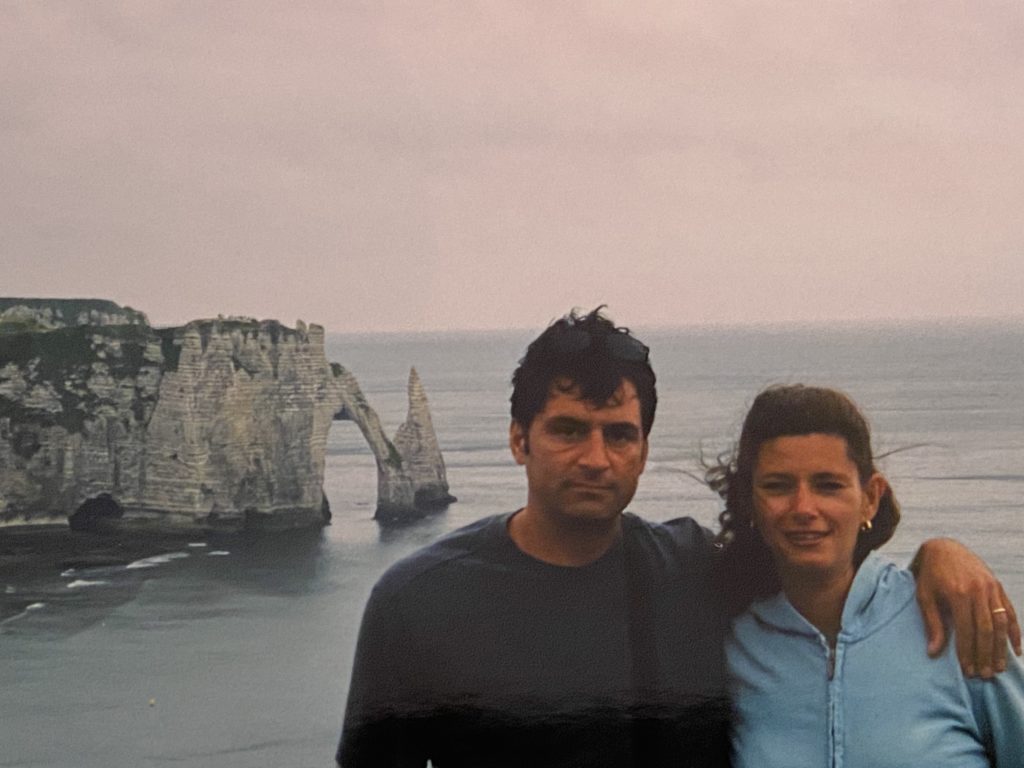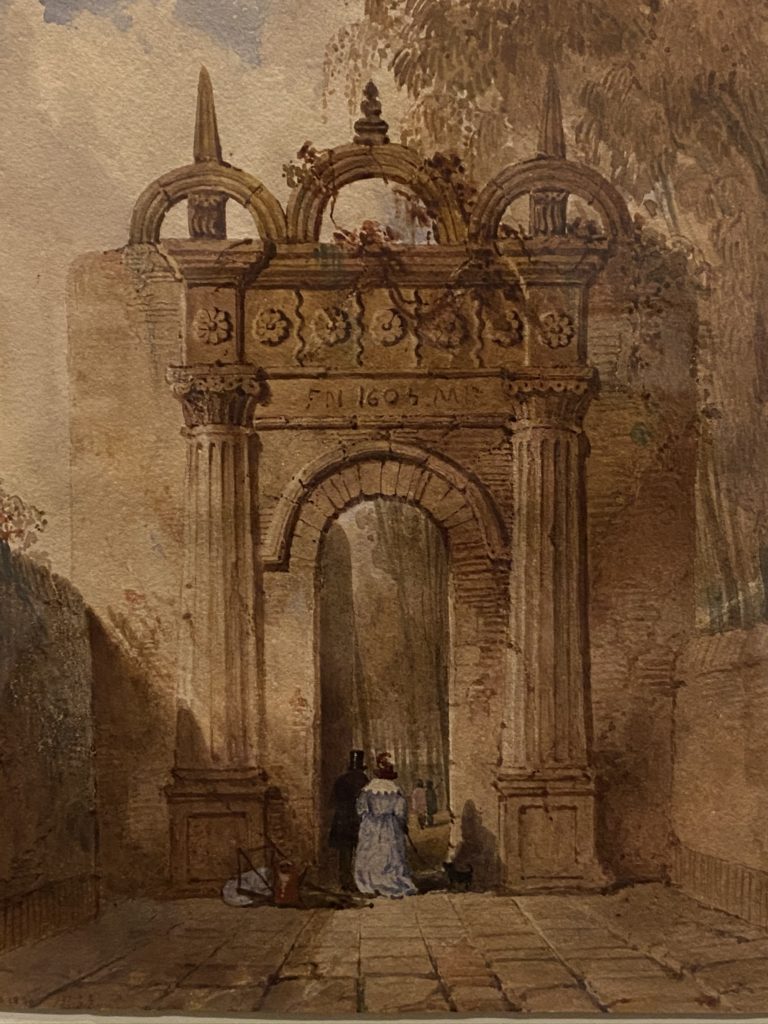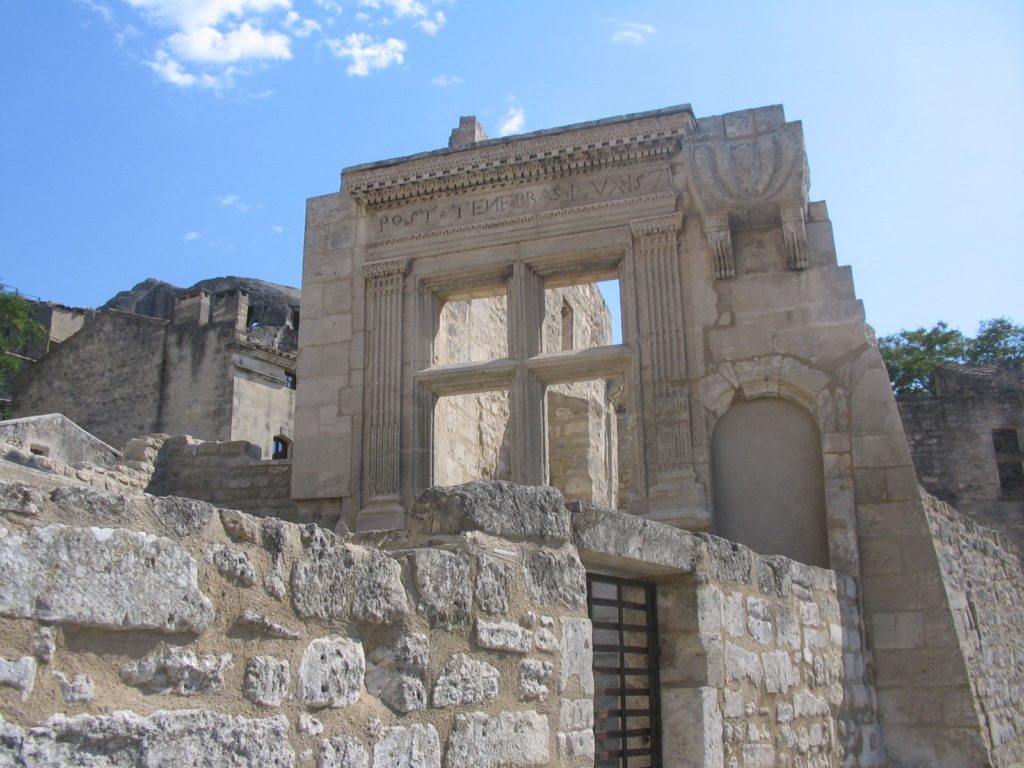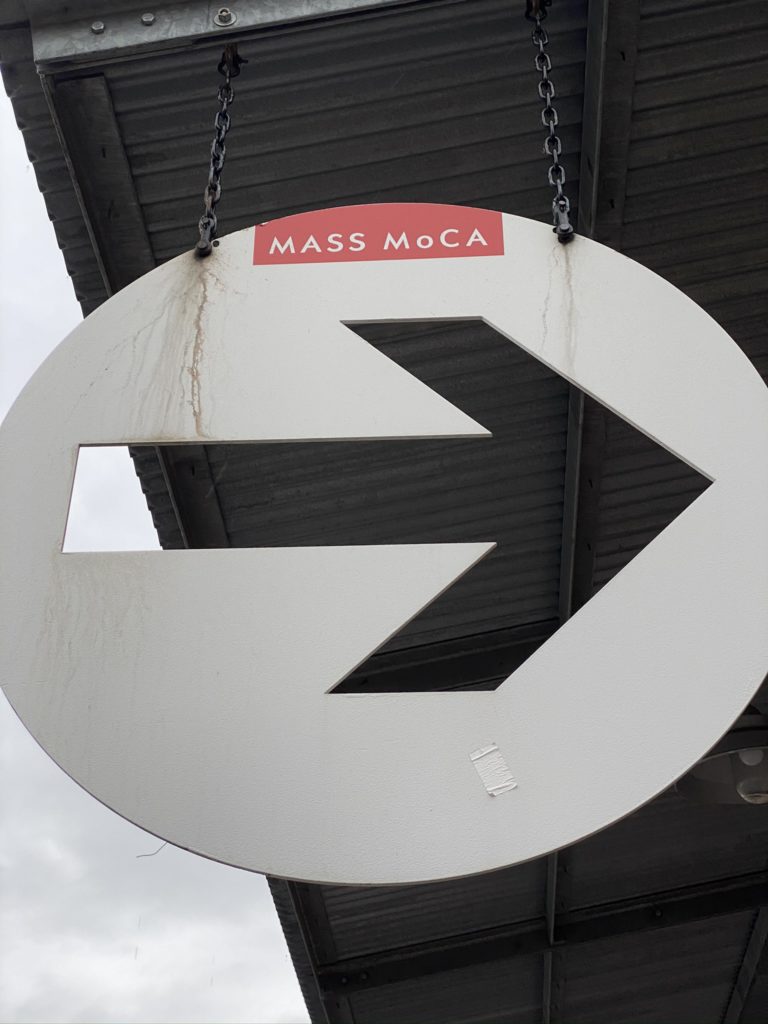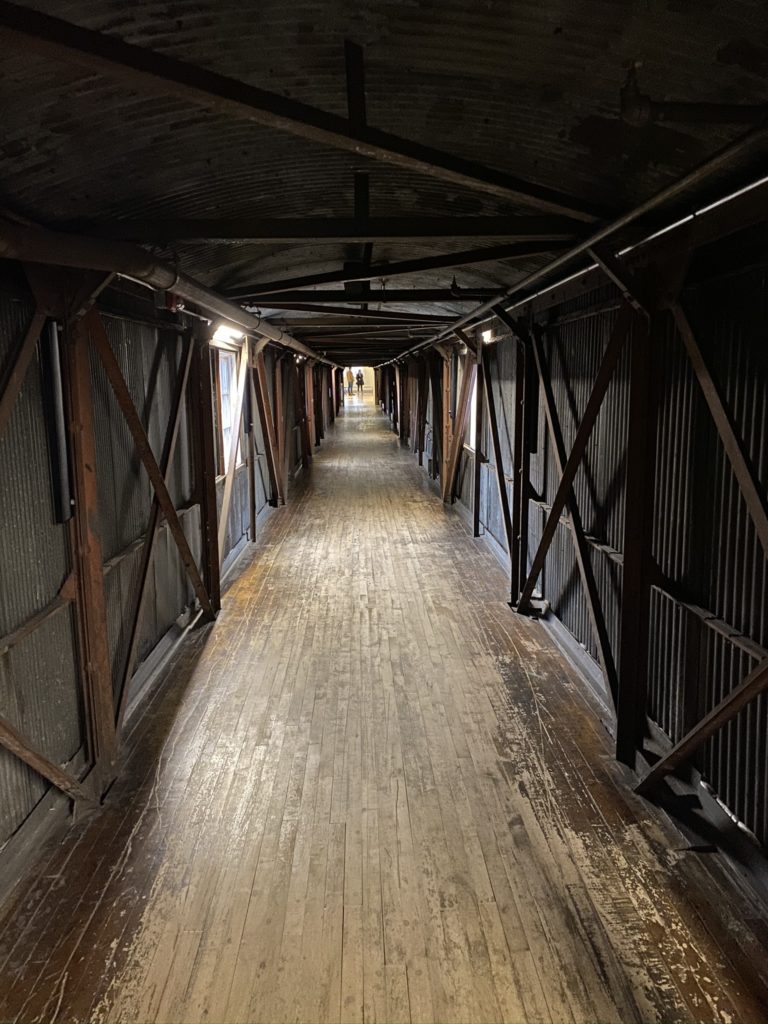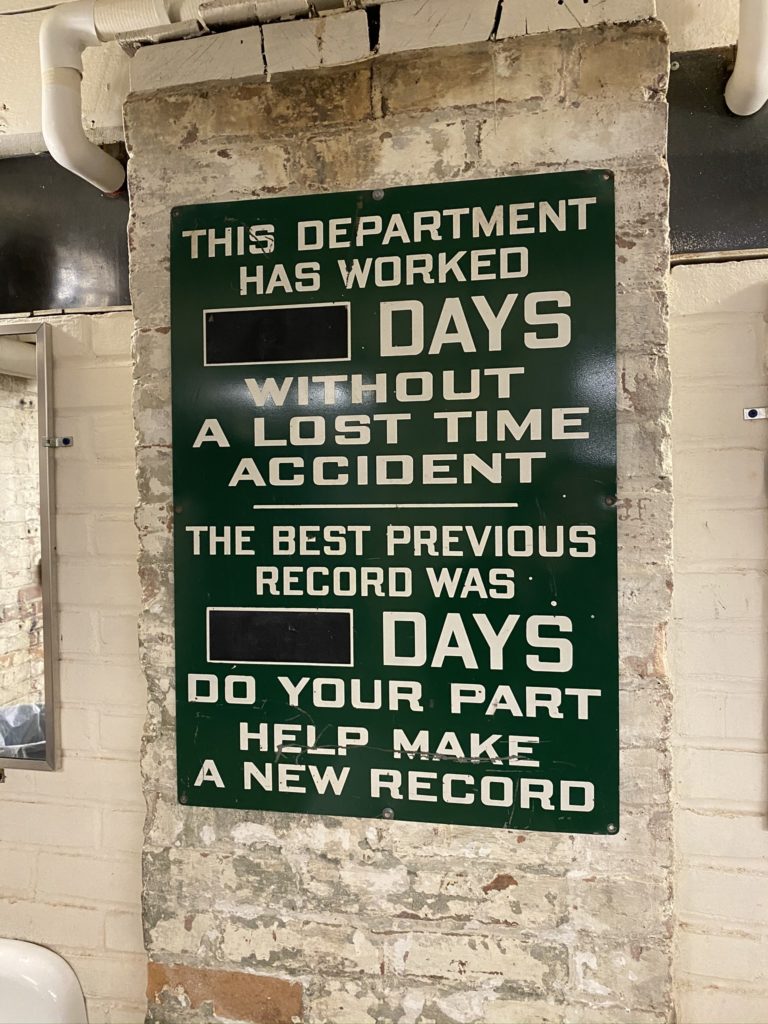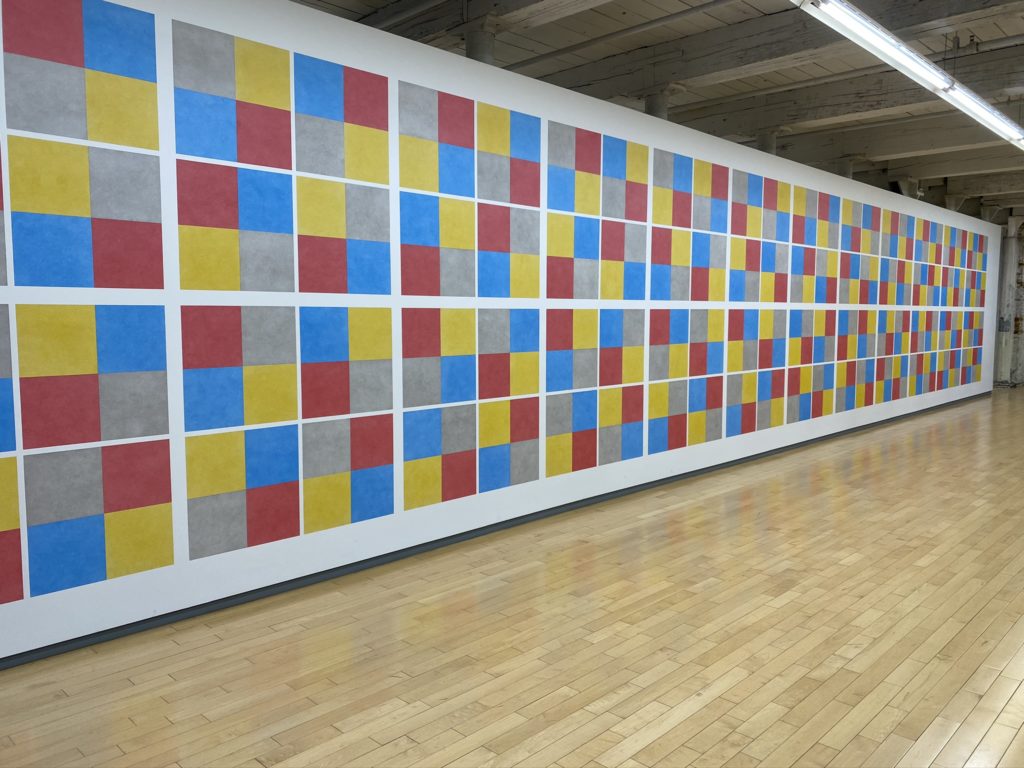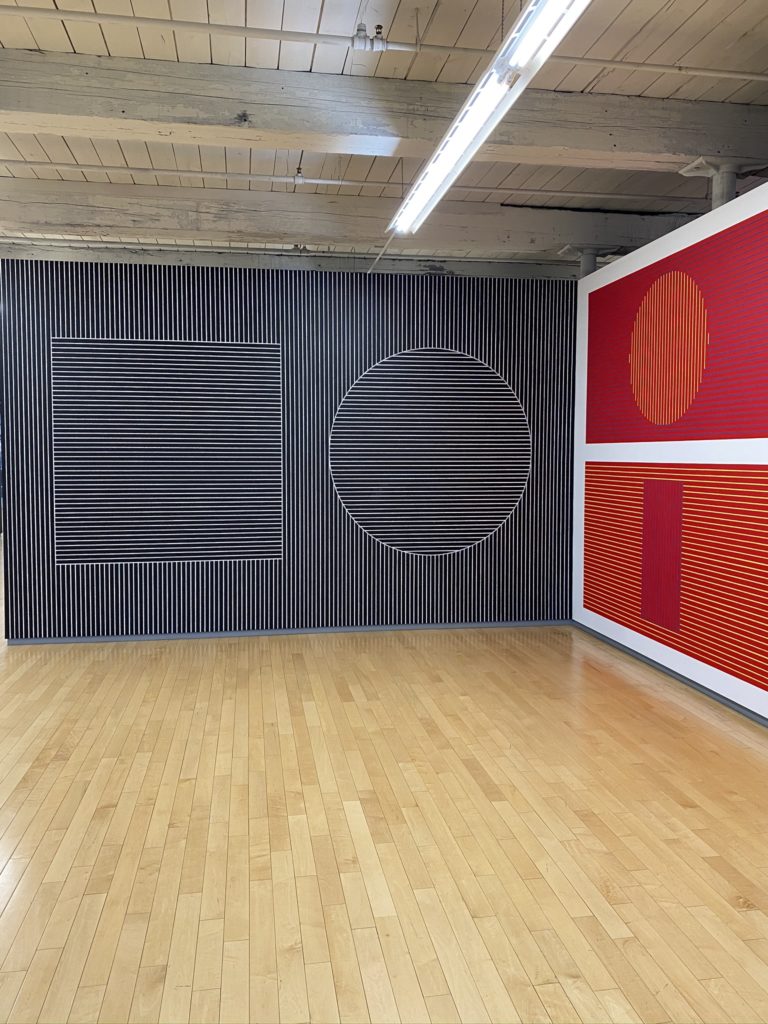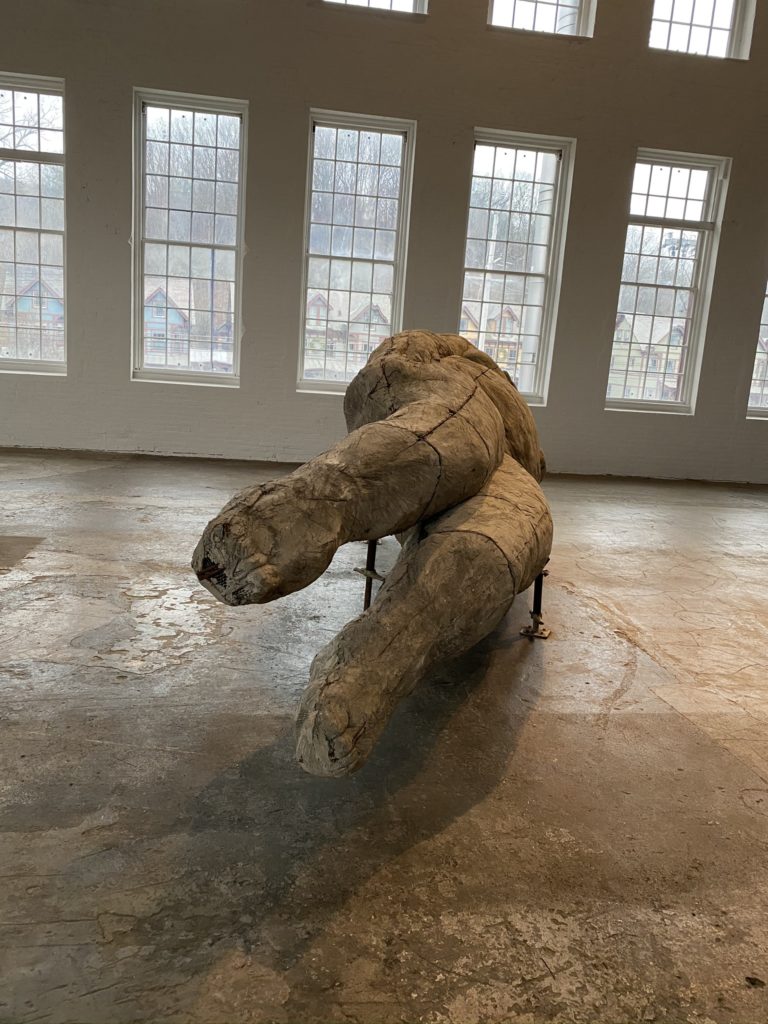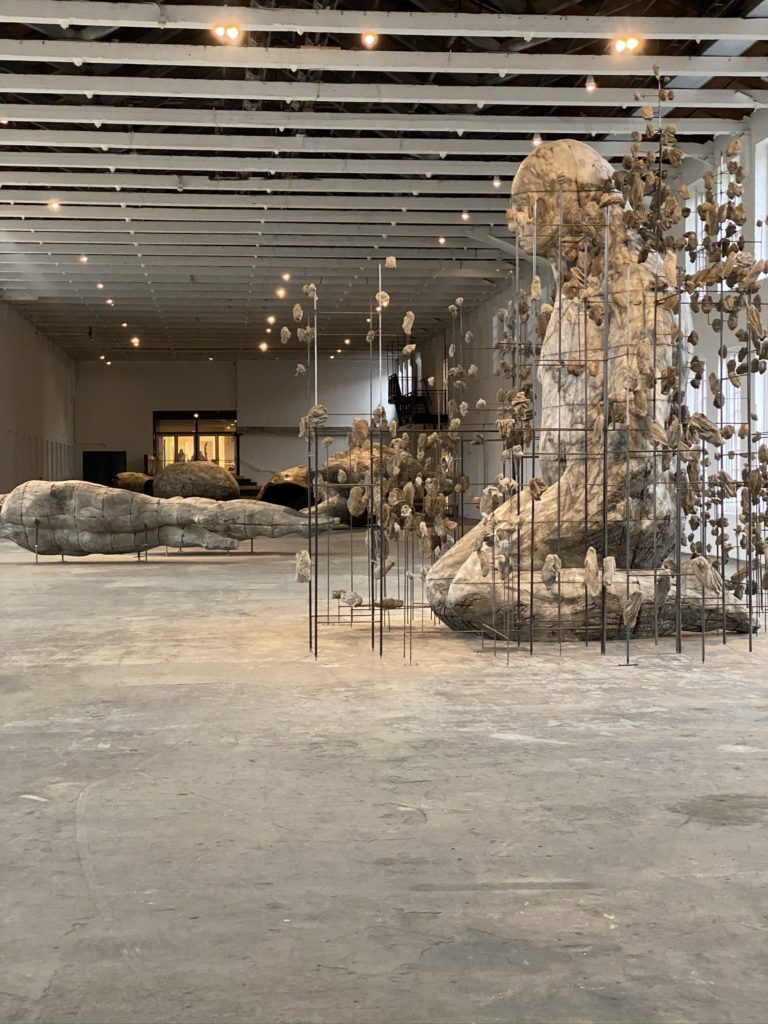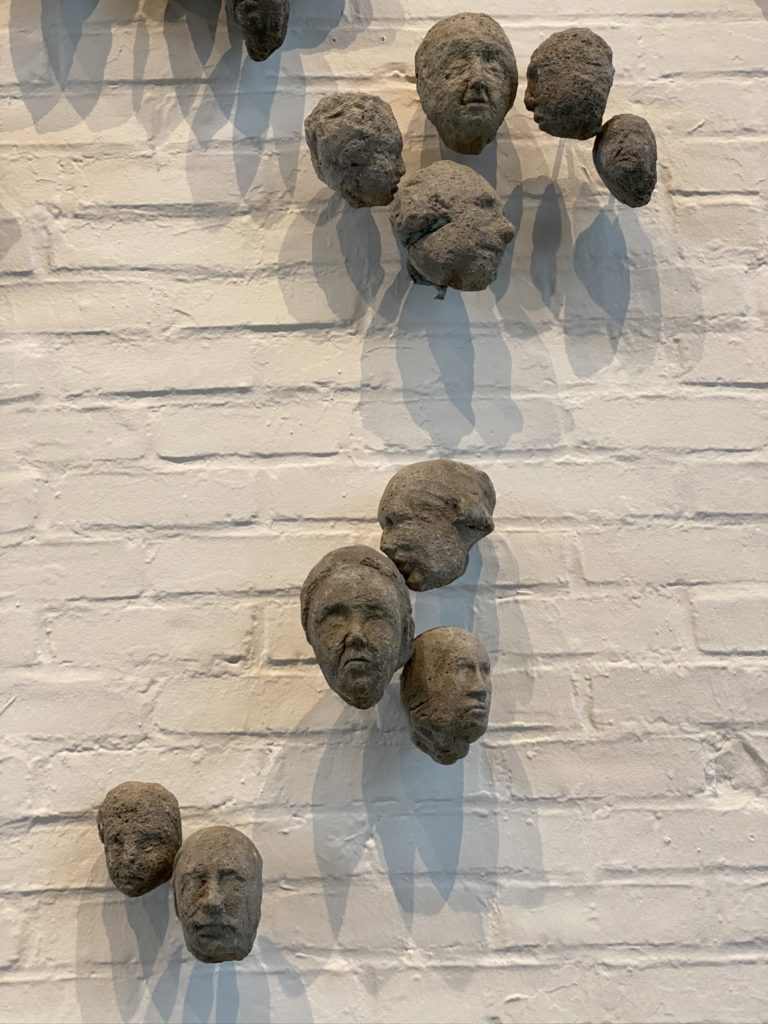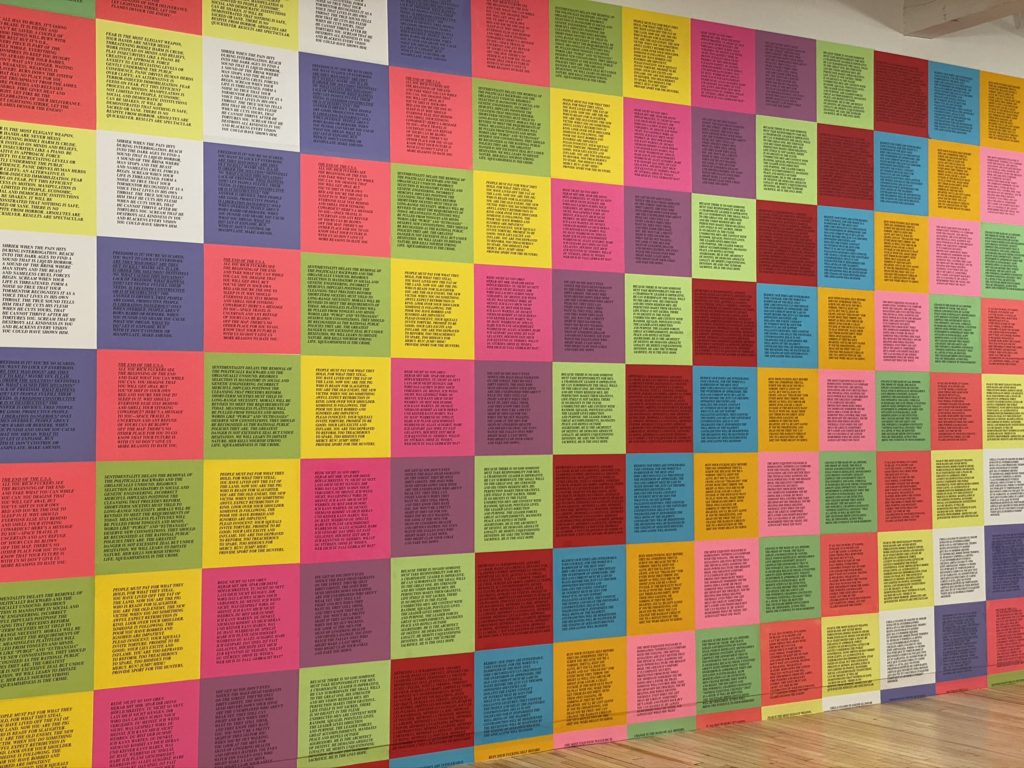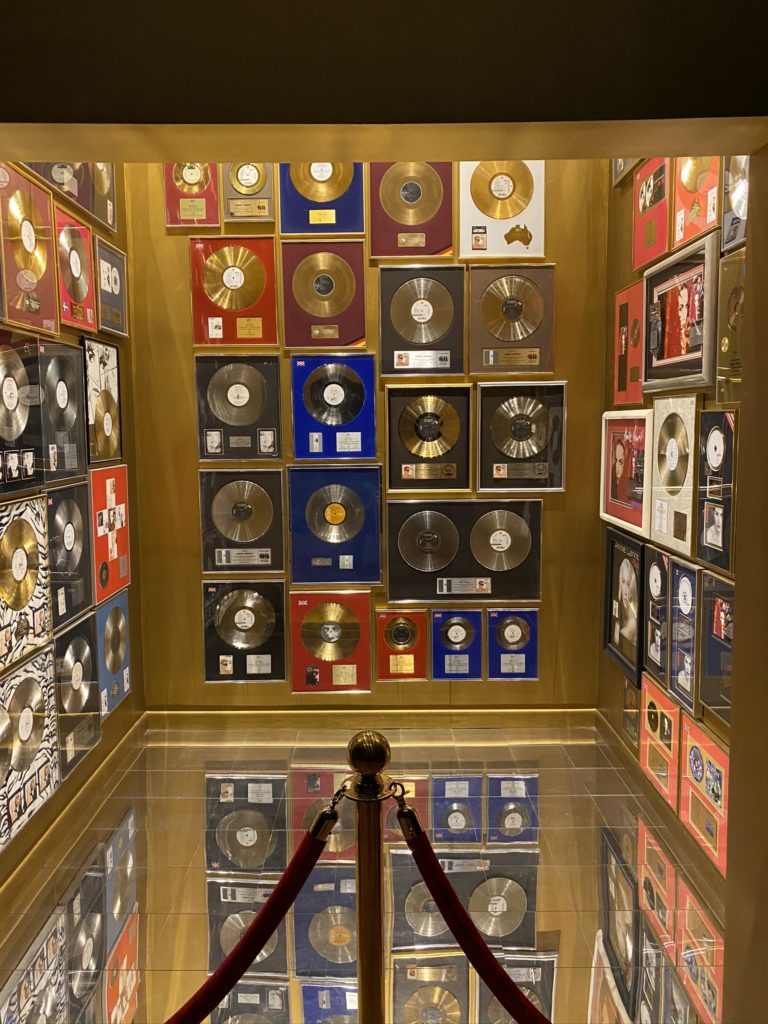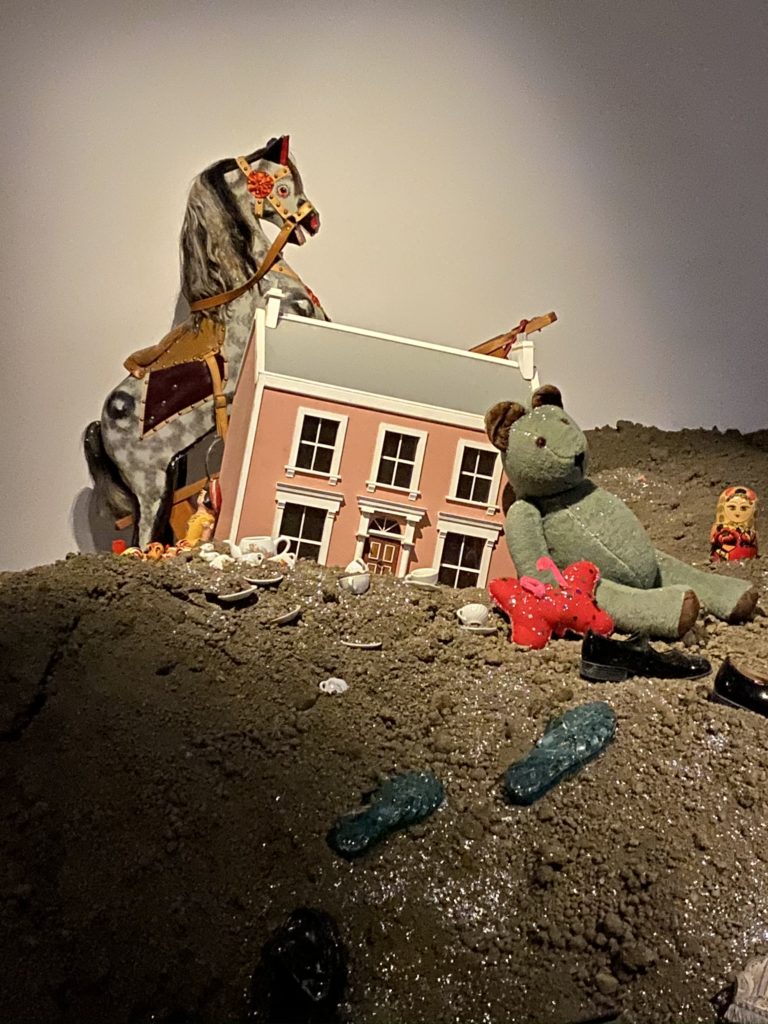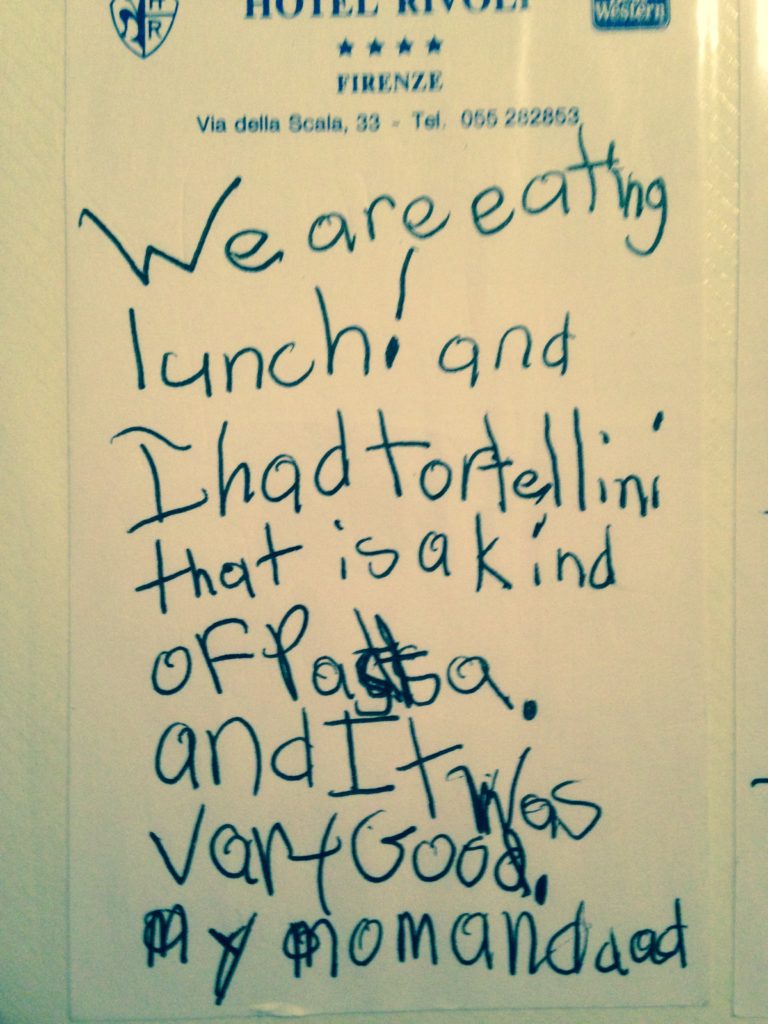
Buffalo, New York, was the town we would always drive through to get to Canada. We rarely even stopped for lunch, knowing that once we got across the border, Niagara-on-the-Lake and the Niagara Wine Trail with its many wineries and good food, was less than an hour away.
This last week, the catalyst to not only stop in Buffalo, but stay a few days and explore everything the city had to offer, was because of a special Frank Lloyd Wright exhibition at the Martin House.
It was wonderful to be back in the car again. And our first road trip since our visit to New Hampshire and Maine last September! We got a late start because of a sump pump and a dehumidifier that were both misbehaving in the Red House. We almost made it to the Thruway when Lynn thought he might want to triple check that he had turned everything off. So, we drove back home and to insure a “better safe than sorry” philosophy, he simply unplugged the offending basement appliances.
Charlie the Butcher’s Kitchen
Have you ever had a “beef on weck?” We had stopped many years ago at Schwabl’s in West Seneca (about 10 minutes from Buffalo) to eat their famous hand-carved roast beef on a weck roll. If you don’t know what a weck is, well, it’s like a Kaiser roll but with salt and caraway sprinkled on top. (It’s also short for “kummelweck”; Kümmel means caraway in German.) Side note: I wrote about how amusing some German words are in my last Substack short story, “Dill with a Capital D” and Kümmel was mentioned in the story if you’d like to read it.
We walked into this particular Charlie the Butcher location (there are now several) and ordered two beefs on weck and split an order of onion rings. I slathered on a generous dollop of horseradish as well as mustard on mine, and yes, it was delicious.

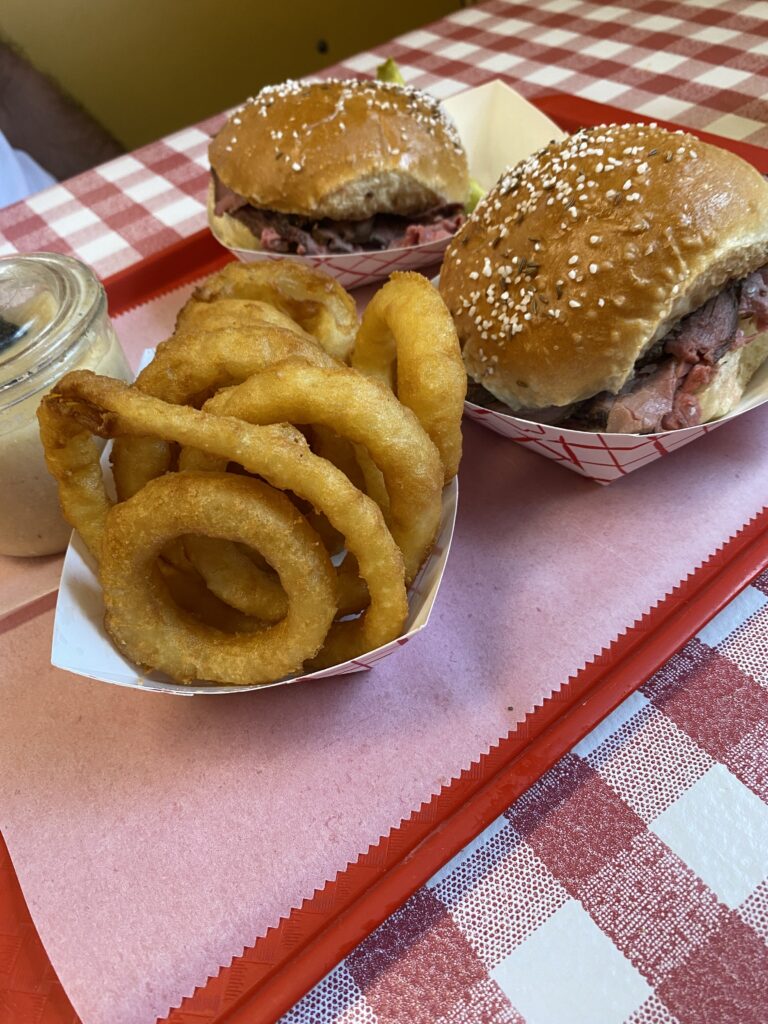
Richardson Olmsted Campus
After lunch we headed over to the Richardson Olmsted Campus and discovered the Lipsey Architecture Center on the lower floor of the Richardson Hotel. The Center did a wonderful job of highlighting many of the historically important buildings in Buffalo which suddenly gave us that much more to see over the next few days. The campus, which opened in 1880, was once the Buffalo State Asylum for the Insane. Designed by Henry Hobson Richardson (hence the current name), as well as the landscape architect Frederick Law Olmsted (who also designed New York City’s Central Park), it is an astonishing complex. Many of the buildings are in ruin and if you walk around the grounds, the ones still standing kind of give off a Jack Nicholson’s One Flew Over the Cuckoo’s Nest vibe. Much of the complex fell into disrepair in 1974, but luckily the property was saved from the wrecking ball and is now owned by a private developer. Here are a couple of photographs.
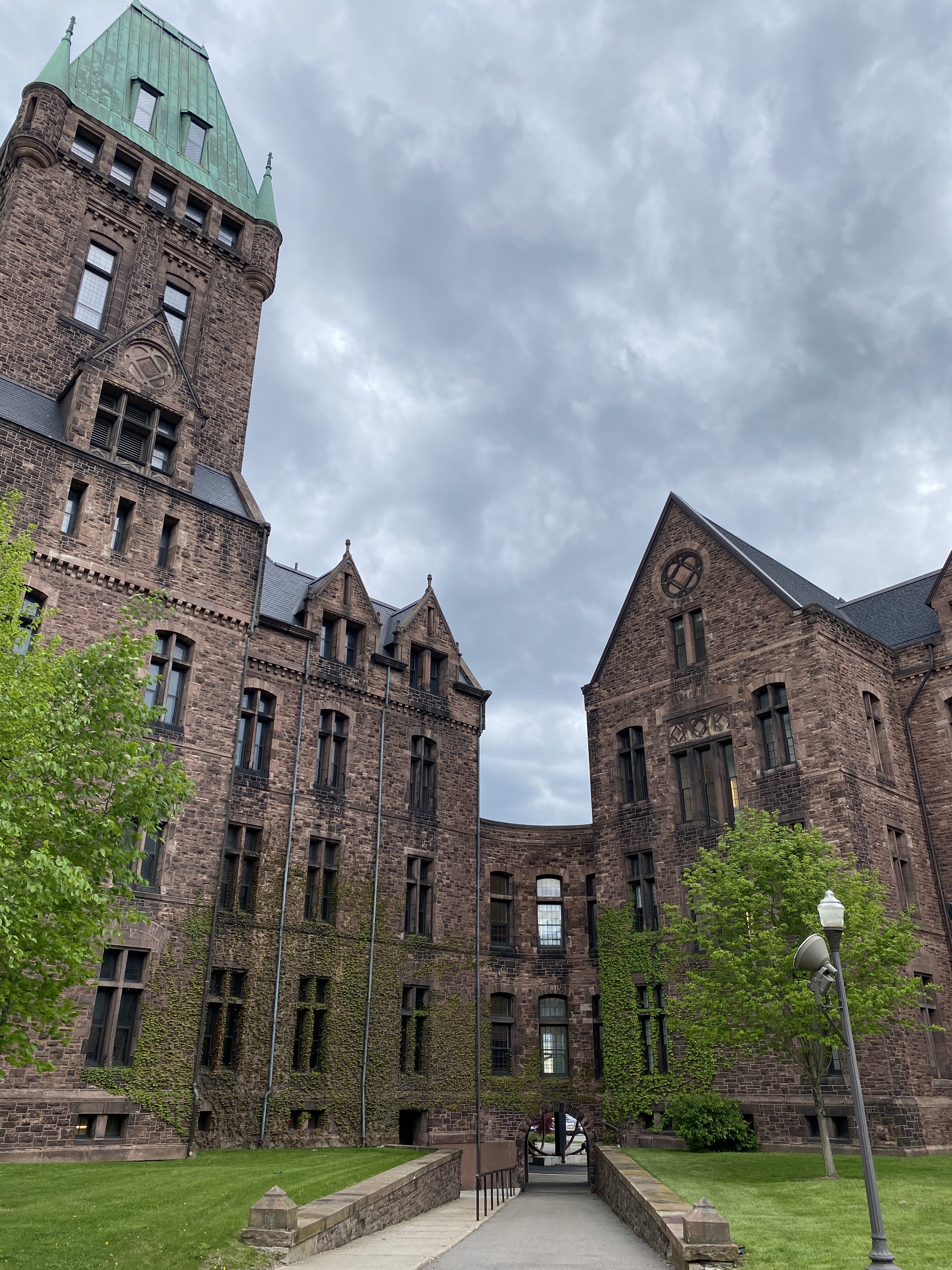
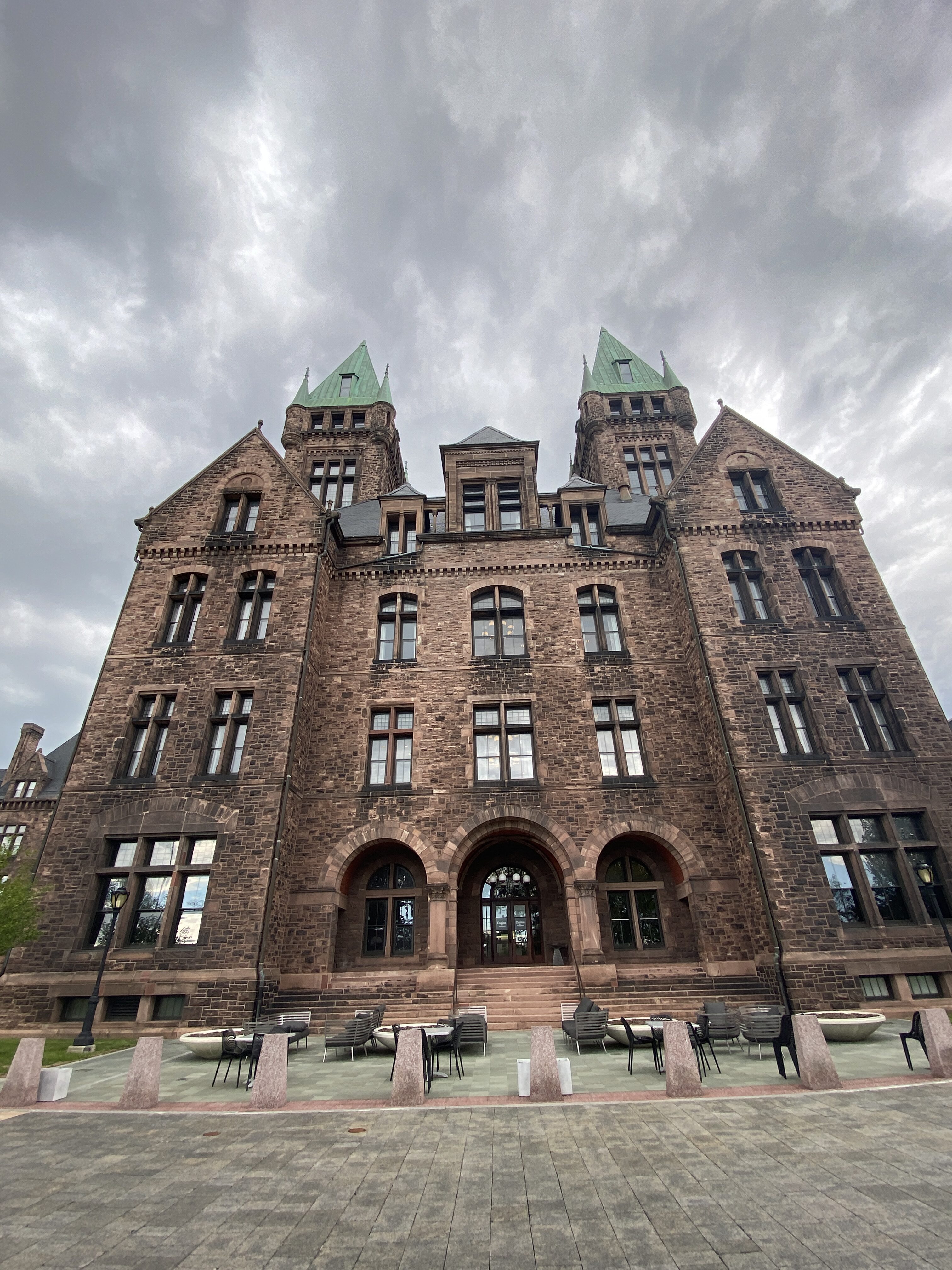
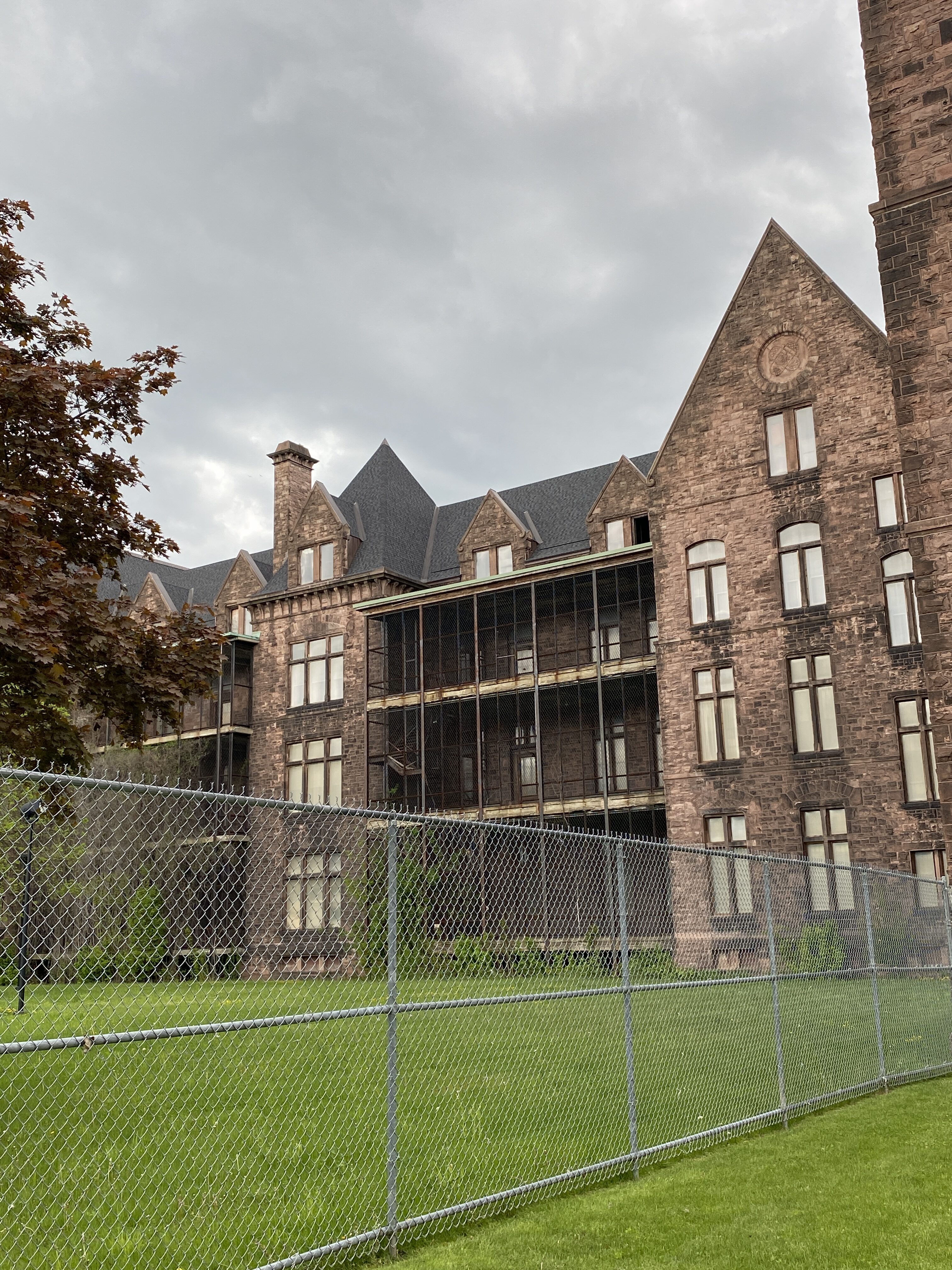
Wright Designed a Boathouse?
We have frequently driven on I-190 heading either towards Niagara Falls or the Peace Bridge when traveling to Toronto. Somehow, we missed the fact that Frank Lloyd Wright had designed a boathouse in 1905 which, however, wasn’t built until 2007. (The building is practically impossible to see from the highway even if you are leaning out of a car.) It reflects many Wright details (small square windows and a flat roof) and is now managed by a rowing club. Apparently, it can also be rented out for weddings, etc.

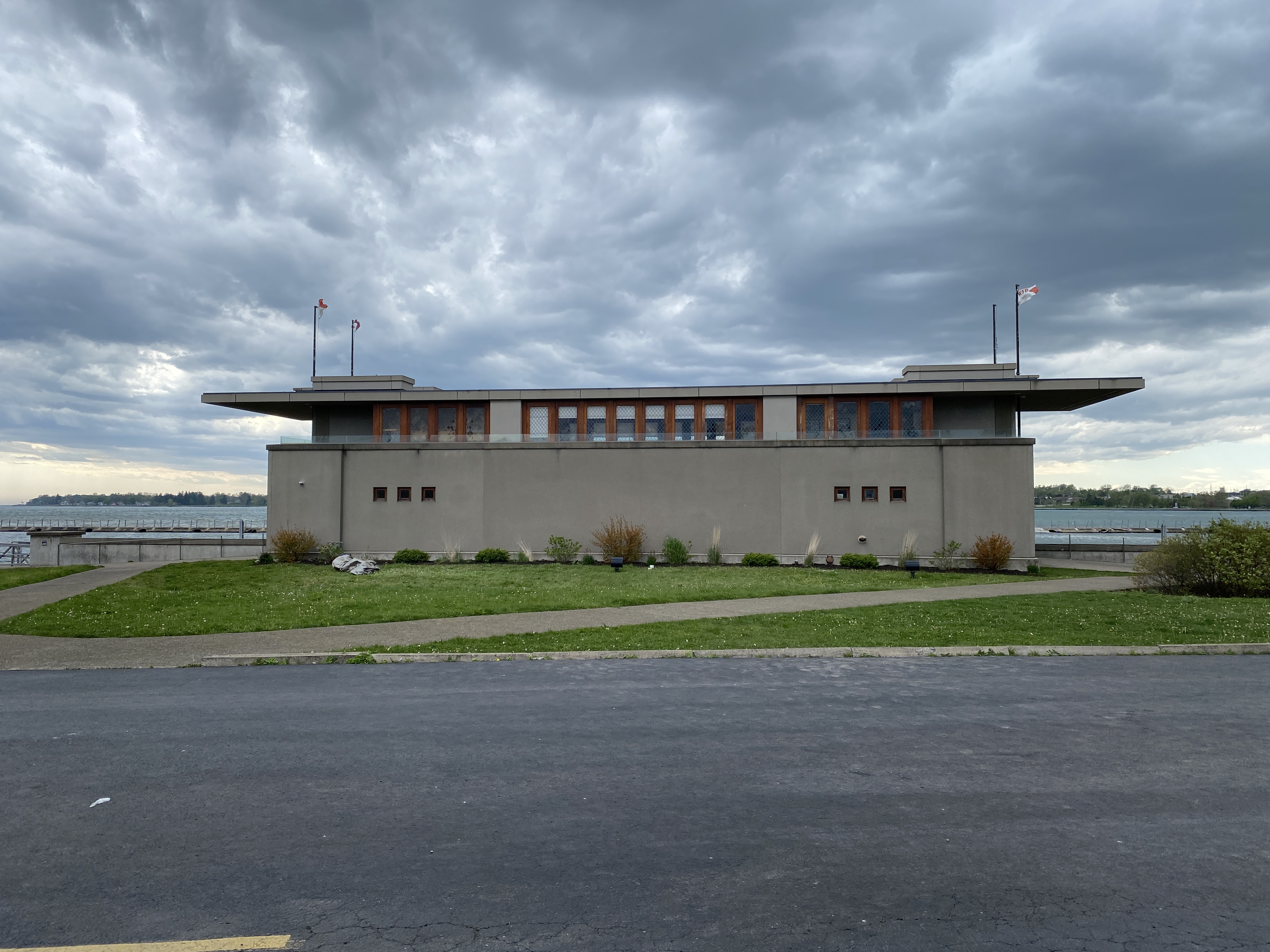
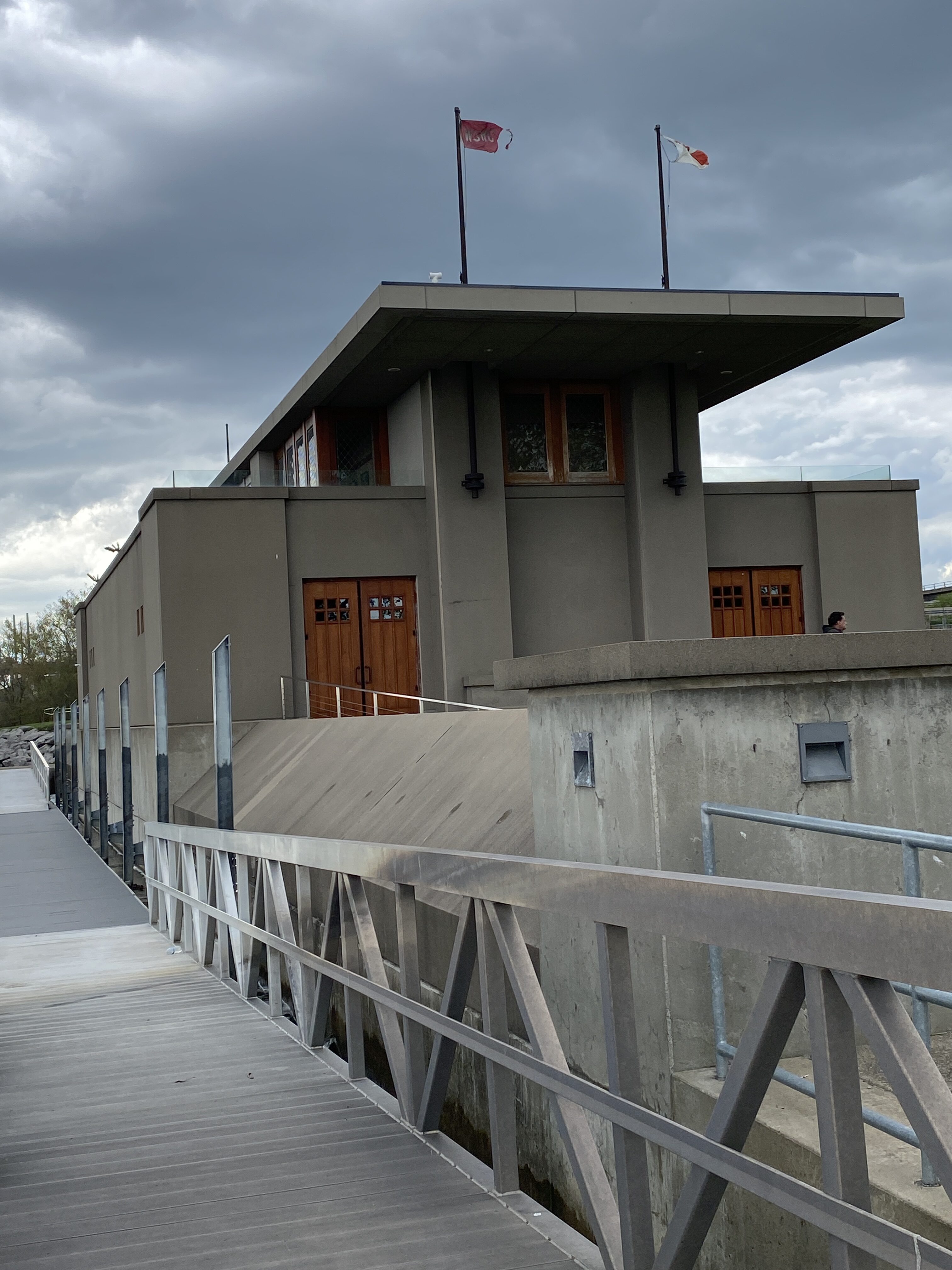
Then, Louis Sullivan & Dankmar Adler
Thanks again to the very thorough timeline of important Buffalo buildings at the Lipsey Architecture Center, we discovered that the Guaranty Building, designed by the aforementioned gentlemen, had been saved from the wrecking ball (yeah!), and was most recently renovated in 2008.
Currently owned by the law firm Hodgson Russ LLP, there is a wonderful (and free) exhibition in the lobby that details the history of the building when it was built in the late 1890’s. At the time it was the tallest building in Buffalo. What was really cool about this building is that it’s unlike anything I’ve ever seen. There are many terra cotta blocks, circular windows on the top floor of the building that let in light, and numerous decorative features that hide the steel-frame construction.

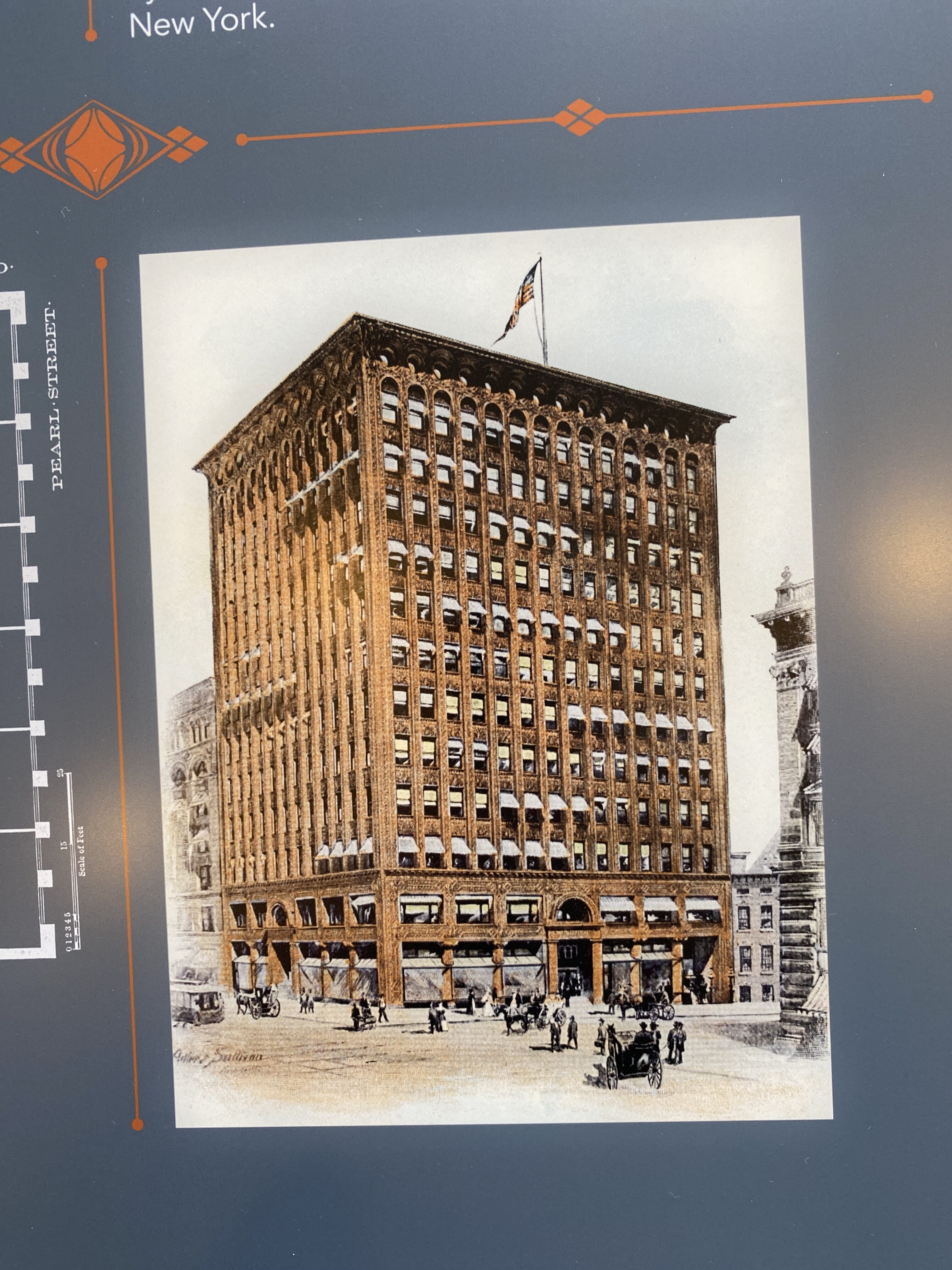
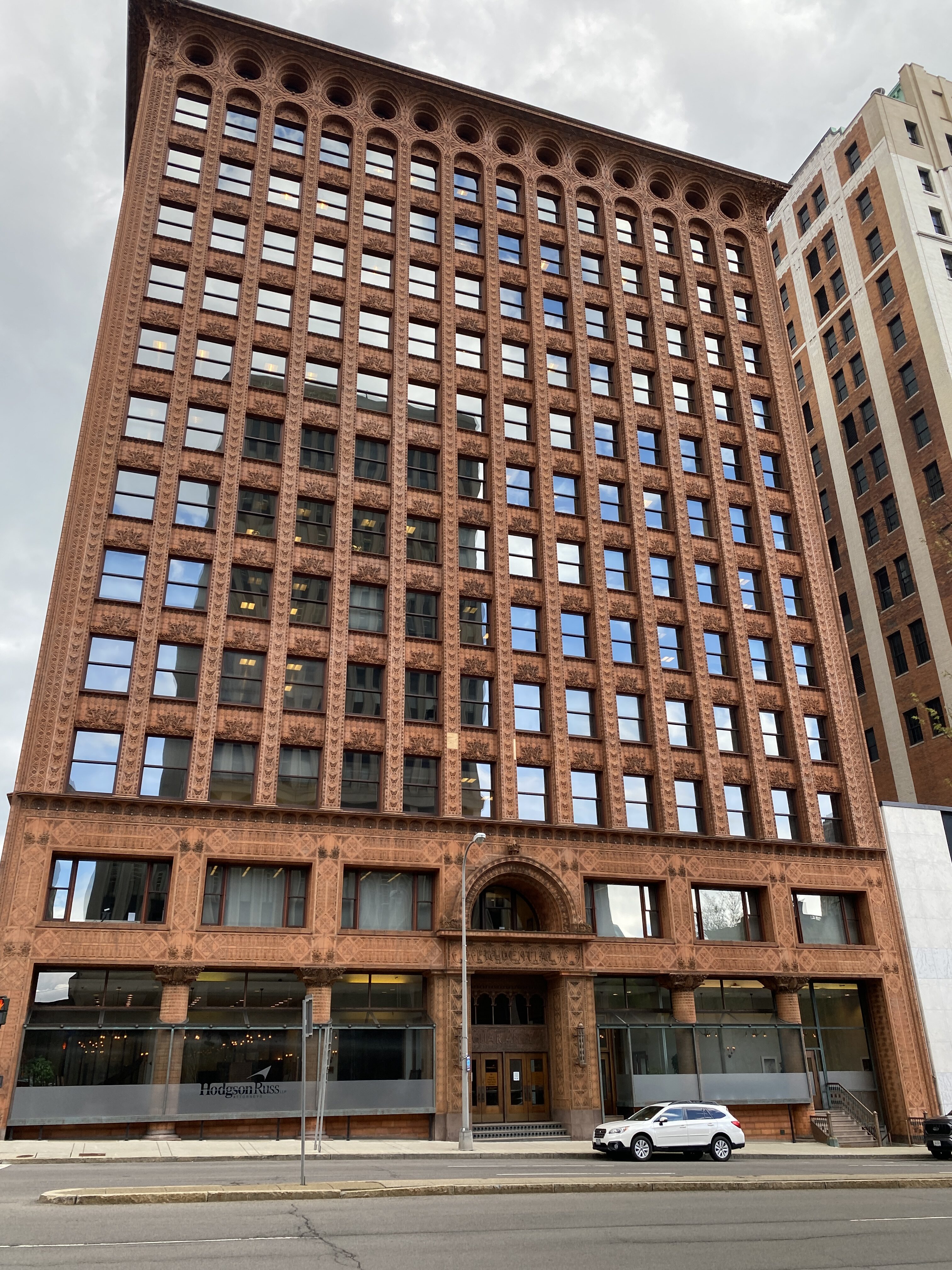

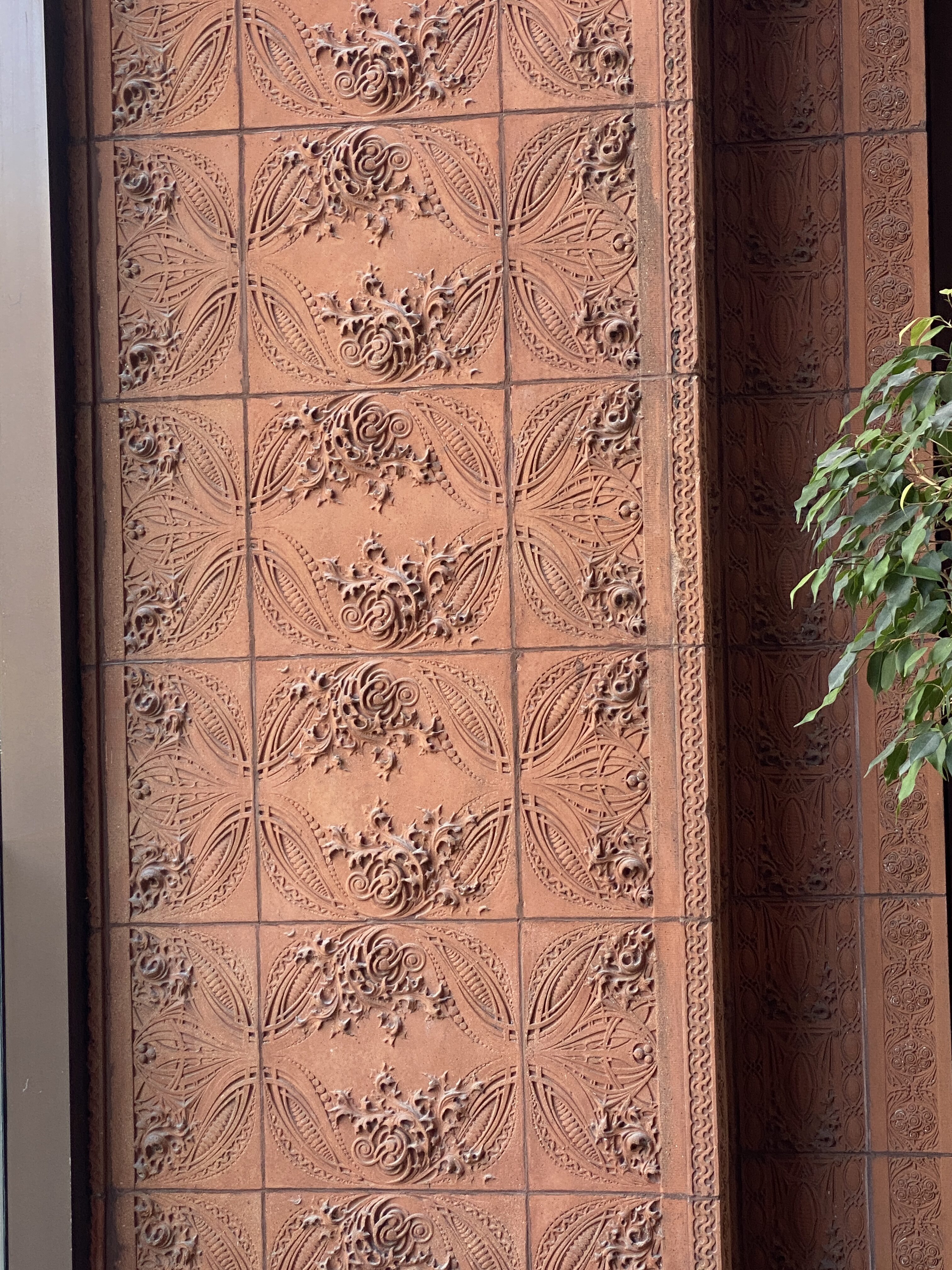

A Drive-By of Two Other FLW Houses
We have been on other Frank Lloyd Wright house tours where people simply show up and try to finagle their way into the house. Or they pretend they were lost or late, and on one tour we were on, the couple was bold enough to park their car in the driveway! I’m very sensitive to people who are lucky enough to own Frank Lloyd Wright houses. I also have to assume they don’t want people photographing their properties or banging on their doors. Therefore, we did a quick drive-by of two other FLW houses near the sprawling Delaware Park which though I briefly photographed, I will not share. I will say that the houses were on the smaller side, but I think it might be kind of fun to live in one of his houses at least for a while.
Dinner – Bacchus Wine Bar
After checking into the hotel (Holiday Inn had the cheapest mid-week rate we could find in Buffalo), we headed for dinner. We hadn’t been out to dinner since Christmas (really!), so I was looking forward to having someone cook for me. I won’t go into how much it pains me to look at restaurant menu prices these days, but I do understand the struggles many restaurants are facing to simply stay afloat what with surging food costs and an ongoing labor shortage. However, if you are billing yourself as a “wine bar,” it would be nice to have a wine list that doesn’t make you crazy when you look at the mark-up. While I did find a bottle that wasn’t outrageous and it was drinkable, I was annoyed at having to spend that much time reading a menu to find something we could afford. That said, the food was very good. I hadn’t had foie gras in a long time and Bacchus’ version was delicious. (Yes, that’s a waffle cradling the duck liver. I’m not a big fan of waffles, but it did in fact pull the dish together.) They were also running a halibut special that night with an asparagus risotto that I couldn’t refuse. We skipped dessert, finished the wine, and walked around the area afterwards.
Did you know that Buffalo had a tram? Neither did I. It reminded me of Europe. (I think they actually call it a Light Rail.) And that there are so many interesting buildings to see? I didn’t either. (I did read that at one time Buffalo was considered to be second only to Chicago in its collection of architecturally significant buildings.)






Day Two
In the “old” days we would avoid hotel breakfasts like the plague. Today, with the cost of a bagel sandwich (egg/cheese/bacon) pushing $10, plus a cup of coffee another $3, I’m always looking for a hotel that includes some sort of breakfast with the rate. It wasn’t the worse breakfast we ever had. They had run out of anything that resembled bread by the time we got downstairs, but they had loads of cheese omelets and something that was pretending to be a miniature cinnamon bun. Neither killed us.
Theodore Roosevelt Inaugural Site
We had time before we could get into see the Frank Lloyd Wright exhibit, so we decided to visit the Ansley Wilcox House, also known as the Theodore Roosevelt Inaugural Site. Anyone ever wonder what the Pan-American Exposition was like? Well, I didn’t, but I now know a bunch of fun facts about what was happening back in 1901! There were parades! And music! And rides! There were even commemorative stamps issued! It was also where President William McKinley was shot. Theodore Roosevelt (VP at the time and vacationing up in the Adirondacks) had to high tail it to Buffalo to take the oath of office. Not an easy task in 1901 since this journey involved a wagon, a horse, and finally, a train. According to our tour guide (this is a National Park Service site), Roosevelt was standing right where the small round table is in the photo below when he was sworn in. Again, this was a house that was slated for demolition in the 1960’s, but a group of people got together to save it which is how it’s now a national historic site.

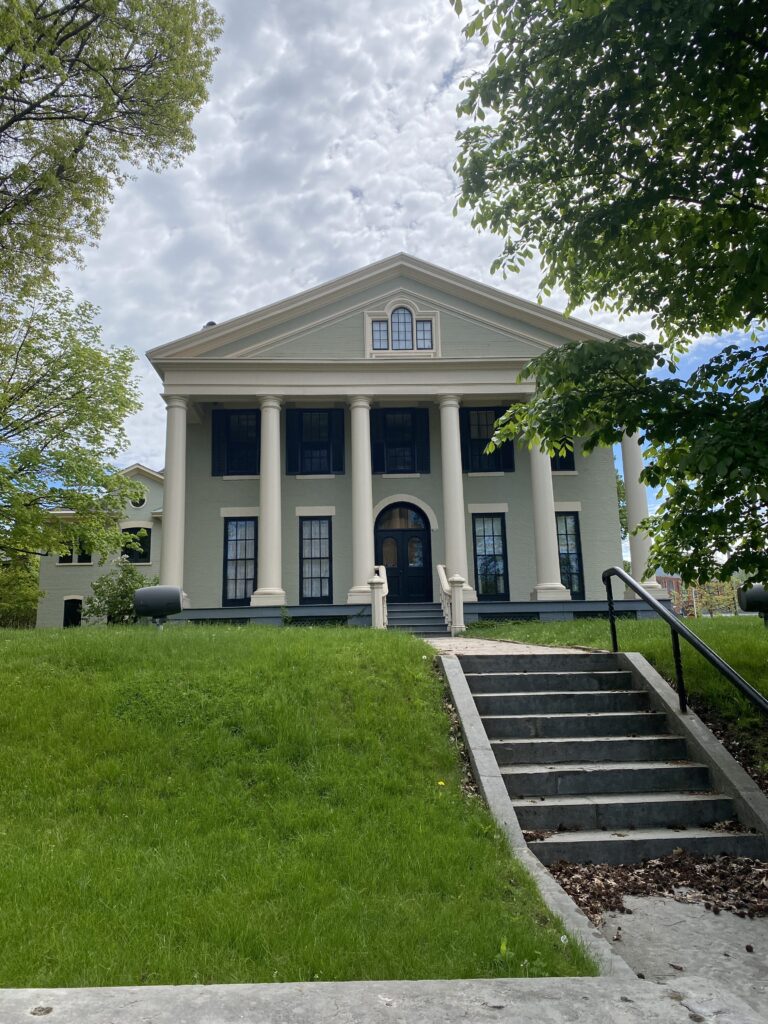
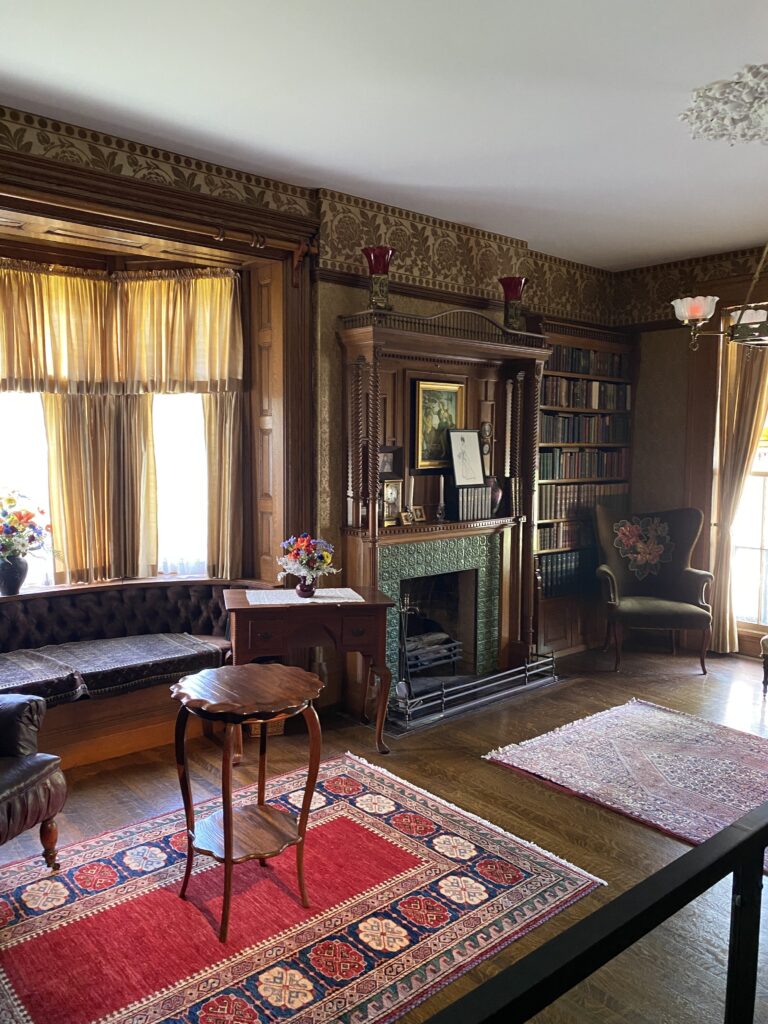
Finally, The Imperial Hotel At 100
Titled “Thought Built,” the show on view at the Barton House (as part of the Martin House complex), celebrates the short legacy of the Imperial Hotel in Tokyo, Japan. The exhibition succinctly detailed Wright’s creativity and sheer determination to be awarded the commission of the Imperial Hotel in Tokyo, Japan. After three years of sketching possible designs (1913), Wright was finally awarded the project in 1916. It took another seven years for the hotel to be built and while the hotel officially opened on September 1, 1923, it was also the very same day that a massive earthquake destroyed much of the capital as well as Yokohama. While the hotel managed to survive the earthquake with minimal damage (due to the way it was designed), by 1968 the hotel was demolished to make room for a high-rise.
Every time I see a Frank Lloyd Wright house, I discover something new. This time around it was learning of Wright’s love for Japanese woodblock prints and how he especially liked to bring back small gifts from Japan for many of his clients.
If you haven’t seen any photographs or renderings of the Imperial Hotel, I strongly encourage you to research it. The hotel complex is really amazing. Unfortunately, we weren’t allowed to take any photographs in the exhibit, but I did manage to get a photograph of the conservatory with a full-size replica of the Winged Victory of Samothrace. (I looked up who/what and why this sculpture is famous and discovered that the original has been at the Louvre since 1884.) We had visited the Martin House years ago, but it was nice to see it again.

When in Buffalo You Gotta Have Wings!
We thought about going to the famous Anchor Bar for wings, but since they’ve become a chain (12 locations and counting apparently), we decided to give our dollars to a more local establishment that specialized in burgers and wings. Were the wings good? Yep! How good? So good that we ate them all before I remembered I didn’t take a picture. We also sat outside, which was lovely, since the rain that had been forecast for the entire week never materialized. We drank a couple of beers and got extremely messy with the wings and a side order of fries. (Allen Burger Venture is the name of the establishment if anyone is interested.)
The Future of Parking
Going to segue here and talk about parking a bit. And apps. I love apps. And I love finding a parking spot right near where I want to be. What I don’t like is having to feed a parking meter three blocks away from where I am parking. And then having to go back to my car to put a flimsy piece of paper on the dashboard to show whoever is checking that I paid to park. If it’s windy the day you are doing this particular maneuver, all I can say is make sure that the little piece of paper you are probably clutching in one hand doesn’t fly out the window. (This happened to us once when we were in lower Manhattan and all I can say is “Ugh.”)
Buffalo has a system where you download their parking app, they charge your credit card, and when you are ready to park, you find out what zone you are in by looking at some of the street signs. Then you indicate on the app how long you want to park at that particular spot. At first, I was a little bit weirded out by this new gizmo (for me), but afterwards I thought it was brilliant. You can also add time via the app so no more running back to a car or feeding a meter!
Niagara Falls Next
I know it’s touristy, but I love going there! It’s not like we haven’t been to Niagara Falls before, we have. It’s just that I love seeing waterfalls and I justified going back up to the falls because I’m doing research for a new book. Also, Niagara Falls is less than 30 minutes from Buffalo and if you have the Empire Pass like we do, you can get into the state park for free.
The last time we had been to the falls it was very crowded. This particular Thursday in May it wasn’t too crowded, and we asked someone to take a photograph of us so we could compare it to the shot we took seven years ago! (Apparently, my hair was a different color then.) But I noticed that we were standing in nearly the same spot as the last time! (See the skyscrapers on the Canadian side?) Also, since 2017, the park service has changed the guardrails and added coin-operated binoculars.
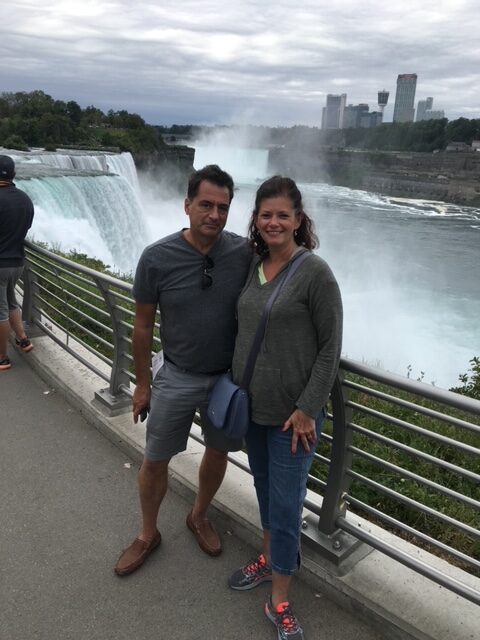

After seeing the falls, taking some photographs, and even paying $1.25 each to walk onto the Observation Deck, as well as down to “Crow’s Nest,” (we didn’t see any crows just people), we drove back to Buffalo.
Buffalo AKG Art Museum
Like the rest of the sites to see in Buffalo, we had never been to this museum. I was disappointed in how few people were visiting given that it was their late night (open until 8 p.m.!) But we walked through the galleries and admired the collection, and most importantly, the building. They’ve also built a terrific addition to the museum with ample light and walkways to make the visit enjoyable.
Here’s a money saving tip if you like to visit as many museums as we do. If you purchase a museum membership at a sustaining level or higher, you’ll usually get into a host of other museums for free if they are part of NARM (National American Reciprocal Museum Association). I shopped around for the cheapest sustaining membership I could find. And, now ironically, because we are members of the Adirondack Experience, The Museum on Blue Mountain Lake, people think we live in the Adirondacks. Which suits me just fine.



The Edward Hotel and Hutch’s for Dinner
Normally, I choose a hotel based on its proximity to where I want to eat dinner. The restaurant was Hutch’s. The boutique hotel, The Edward, was a mere five-minute walk away, so that’s where we stayed our second night. (I generally try to avoid driving after dinner if there are cocktails and wine involved.)
A few years ago, we experienced our very first contact-free check-in when we were traveling around Cape Cod. While I originally thought it was because of the pandemic, I’m finding that more and more hotels are adopting this method of getting into your room because it saves on labor costs. I realize this will probably be the wave of the future and eventually I will get used to someone texting me a code to the front door of the hotel as well as the room. The upside is you don’t have to see or talk to anyone. The downside is that if there’s a problem with the room, it may be impossible to fix. The Edward was reasonably priced, clean and very quiet. It also had on-site parking, which strangely the Holiday Inn we stayed at did not. If I stay there again though I would spend the extra $20 to upgrade to a suite because the room we chose (The Madison) was small. And one side of the bed was pushed against the wall. Guess which side of the bed was mine? Not the good side.
When we walked into Hutch’s, the place was bustling with activity. The menu was inventive, and the wine list was impressive in both its range of bottles as well as price points. Could we get three appetizers and just split an entree? Absolutely. There were oysters, then escargot, and because they had a soft-shell crab special, we had that too. We split a steak (it was very expensive), but they carved it perfectly for us to share. And yes, we even had a sticky toffee pudding for dessert!






Let me just mention that I have lost count of how many times I have to ask a server for a soup spoon or large serving spoon so that if we are splitting a dish, I can be ladylike about it. The fact that our server dropped a big spoon (and tongs!) at our table without even being asked, well, it just notched up the whole dining experience for me.
No Boat Ride, Alternate Plans – Day Three
Right before we had left for dinner the night before, I had gotten a phone call from someone at the boat company we had booked a tour with. Apparently, we were the only ones who had signed up for a 12:30 tour of the Buffalo River and she wanted to know if she could switch us to a later tour that day. Since there were a few other things in Buffalo that we still wanted to see, and I didn’t want to get home super late, we declined. Luckily, she was kind enough to refund our money.
That said, now with our morning free, we drove down to see “Silo City.” We didn’t get really close to any of these massive structures, but it was impressive to see many of these big grain elevators still standing.

Afterwards, we went on the hunt to find where the Larkin Building used to be. Designed for the Larkin Soap Company by Frank Lloyd Wright in 1903, at the time it was described as one of the largest office buildings in the world used by a single firm. And because the building was so unique, even in 1908, the company was giving tours to over 50,000 people a year. Unfortunately, in 1945 the property was foreclosed on for back taxes and by 1950 the entire building was demolished. Many architectural historians describe this destruction as “the most significant loss of an architectural icon in the history of North America.”
After the building was torn down, the only indication that the Larkin was ever there is a commemorative sign and a brick pillar at one end. (The site was supposed to be a truck stop but now it’s just a parking lot.)



It seems that the general theme of this trip has been to gaze at historical plaques where buildings used to be and marvel at the ones that somehow were saved.
We had now run out of things to do in Buffalo. It was still too early to head home (really, barely noon), so we thought we’d drive further west to visit a couple of lighthouses on Lake Erie that I had always wanted to see. So we did – Dunkirk and Barcelona. Which do you think I liked better?


Until our next “Let’s Go” adventure.


